April 20 - 26, 2014: Issue 159
The Wild Coachmen of Pittwater - A Long and Sometimes Bumpy Ride on Tracks Instead of Roads
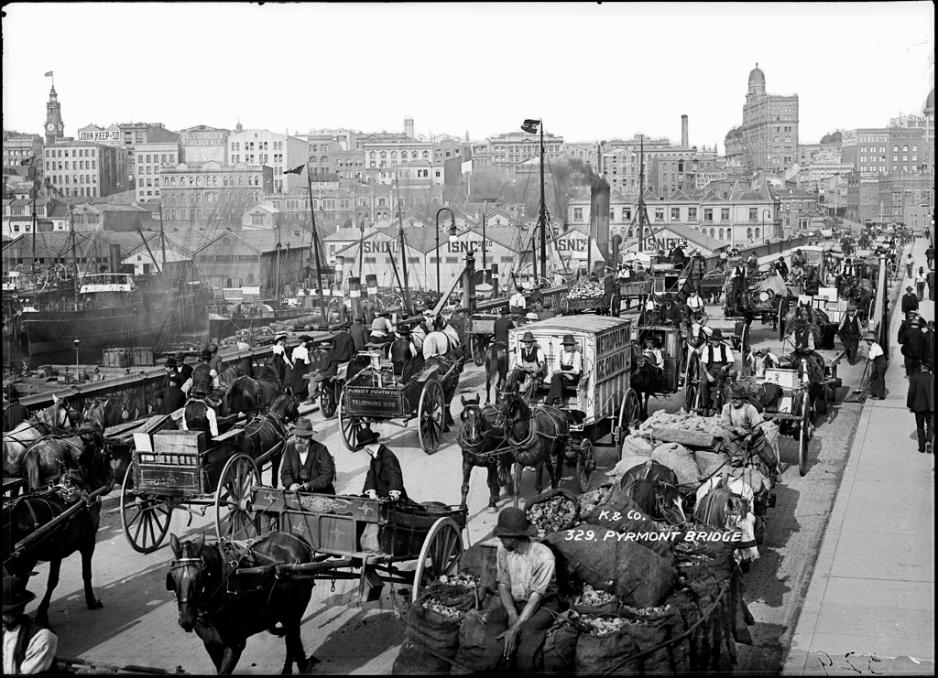
Crowded Pyrmont bridge picture see: nla.gov.au/nla.news-page13266297 ' The Man Who Swings the Bridge', Sunday Times, December 1920! - from the Powerhouse Museum's Tyrell Collection on Flickr.
One day in the Spring of 1985 a climb over Surf Road to Whale Beach presented an interesting phenomenon – the sandy weaving dirt road, so reminiscent of many country scenes, was being tarred – not guttered, but tarred. 1985.
“Ah….progress!” one remarked to said road contractors, who laughed, warned against ruining shoes in dark mixture of tar and gravel being applied.
Getting to Pittwater overland has always been an adventure and claims that the ‘roads’ were little more than sandy tracks, even well into the 1940’s for places closer to civilisation than Whaley, such as the splendid valley that houses Newport, are backed up by images from these eras where you can witness for yourself sandy paths that seem to disappear into paddocks and weaving roads that may have been caused by infrequent visits to holiday shacks.
A little before 1885, and even earlier according to the exquisitely hilarious Charles de Boos (My Holiday 1861), the state of the tracks, or even lack of them, was cited as a good enough reason by one John Farrell of Newport not to propagate fields as the produce there-from could not be got to market at a reasonable cost. Little wonder the steamer trade did so well and was so important to those living around the estuary. Those along the coast side, after agitating for a regular Mail run found added benefit as the Royal Mail coach could then carry passengers into the area.
The first coaches to Newport and further afield were advertised in 1879. The original coach-driver is recorded as William Boulton (please note some sources spell ‘Bolton’) although John T. Collins, who had won the original Mail Contract in 1871, appeared to have a conveyance as well, as supplied or supported by his father in law - John Farrell II. A Farrell coach would continue to be advertised but it was William Boulton who ran the Royal Mail coach to Bayview, Church Point and Newport and he who became licensee of the Newport Hotel and then its owner (1881) to whom a succession of others as licensees stayed for a season or many years:
The " Florrie" having started, at full speed, at eight o'clock a.m., reached Blackwall (at the southern extreme of the widest part of the lovely broadwater of Gosford) in rather better than half an hour, and there she took in the Blackwall mail, with some more passengers; after which she proceeded rapidly down the stream, by Hardy's Bay, and across the large, lake-like expanse beyond it, in the direction of Mulhall's Point, and the Bar; passing through that seaward portal of the lonely district out into Broken Bay, at a pace which fully proved the capabilities of the trim little craft for her destined purpose. The mail steamer was found by her passengers to be swift but steady, being furnished everywhere, and in every respect, with a studious regard to the personal comfort of all. In the bay there happened to be a very heavy rolling ground swell, yet the " Florrie " swept over it all, though more like a quick little seabird than a lumbering pelican : her rapid motion being barely perceptible, because she is not worked by paddle-wheels, but by a screw at her stern of the latest design and best construction. The smart little steamer in a very few moments flew across Cook's broad Broken Bay, a little to the eastward of Mount Elliott; paused for a brief space off the Sub- collector's station in the Bight of Barrenjuey, and then ran directly and pleasantly south-ward, over the smooth, still, landlocked depths of Pittwater- past Careen Bay to the left, and past the "Basin" and Scotland Island to the right-until she halted at the jetty, at the head of the long and picturesque inlet at Pittwater, at half-past 10 o'clock, having come along leisurely from Gosford wharf (including all stoppages) in two hours and a half. Here the excursionists, who were going no further,-and who had evidently enjoyed the trip amazingly, and were in a high state of delight with the ever changing scenery-all landed; and, having formed a hasty camp, they dined together al fresco under the trees.
The coach came down to the end of the jetty precisely at eleven o'clock, and after having been duly and heartily approved of by the Gosfordites, was depatched back again in due course to her destination - Manly Beach. The coach proved to be a fine four-wheeled waggonette, provided with a high, fixed leathern hood, and drawn by two horses; everything about this coach, as on the steamer, was perfectly new. The experienced driver is Mr. Bolton, whose hospitable roof has often sheltered disappointed, weary, and sea-sick travellers, when the sea-going steamer has had to put back with them into Pittwater in bad weather, and stern necessity has compelled them to face a long night's journey overland to Manly afterwards, through the darkness and rain. The trap to carry the mail and passengers is a smart and stylish turn-out, painted red and black; and it was found-by some critical jago of the party, who must needs know everything-to have come all the way from the Manly post office that morning in one hour and three-quarters. It would seem, therefore, that there is really nothing whatever to prevent letters sent from Gosford to the Metropolis by this route from being distributed in Sydney by the four o'clock delivery on the very same day. Comment on the magnitude of this improvement must be quite superfluous.
Before the excursionists left the " Florrie," the Police Magistrate, Mr. Edward Reeve, addressed a few remarks to those present, congratulating them all on the happy and auspicious inauguration of the new overland route to Sydney, via Pittwater and Manly. He briefly pointed out to them some of the many striking advantages thereby secured to the district and to the public at large; and he expressed his ardent hope that the opening of this route might be to them an earnest of still greater progress. In the courts of his observations Mr. Reeve paid a warm and well merited compliment to his friend, Mr. Rock Davis, by whose persevering energy and liberal enterprise the outer gates of their district were thus for ever unbarred, and an immense and permanent alteration secured for more expeditious and pleasant travelling between Gosford and Sydney, together with a greatly improved means afforded for the reception and despatch of letters and newspapers. At the close of the Police Magistrate's remarks three hearty cheers were given for the " Florrie" and for Mr. Rock Davis.
The day was a lovely one, and the magnificent lake scenery was everywhere seen to the very best advantage. It appears to be quite certain-now that, in spite of interested opposition, flippant imbecility, and pure Rip-Van-Winkleism, this route is happily established-that a large number of excursionists may constantly be expected down this way from Sydney to visit the far-famed Hawkesbury and the little-known Brisbane Water district. These will have to leave the Circular Quay for Manly Beach in the steamer with the mails at seven a.m. ; and they can thus arrive at Gosford at about 2 p.m. This route is open (for the present) only on Thursdays and Saturdays, but it will, doubtless, soon be in active use daily. The "new overland" will doubtless be the favorite route by which all foreign visitors to the Sydney Exhibition will come down in search for the picturesque at the Hawkesbury and at Brisbane Water.Gosford, 5th August. Opening of the New Overland Route from Gosford to Sydney. (1879, August 9). The Maitland Mercury and Hunter River General Advertiser (NSW : 1843 - 1893), p. 12 Supplement: Second Sheet of the Maitland Mercury. Retrieved from http://nla.gov.au/nla.news-article18931762
Coach to Pittwater 1879: Advertising. (1879, December 24). The Sydney Morning Herald(NSW : 1842 - 1954), p. 1. Retrieved from http://nla.gov.au/nla.news-article13443903 - And same in January 1880: Advertising. (1880, January 31). The Sydney Morning Herald (NSW : 1842 - 1954), p. 1. Retrieved from http://nla.gov.au/nla.news-article13449929
1880 advertisement – coaches by Farrell Bolton and Frasa: Advertising. (1880, December 30). The Sydney Morning Herald(NSW : 1842 - 1954), p. 4. Retrieved from http://nla.gov.au/nla.news-article13480622
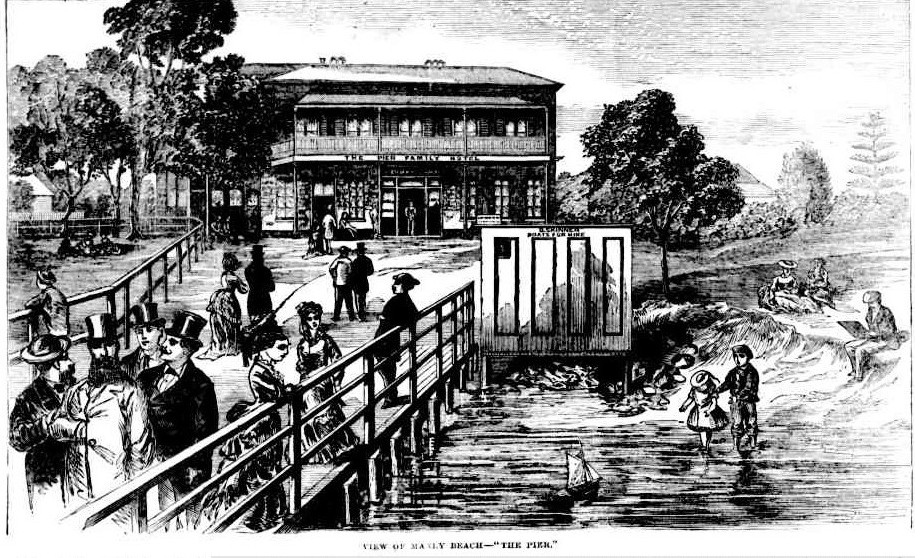
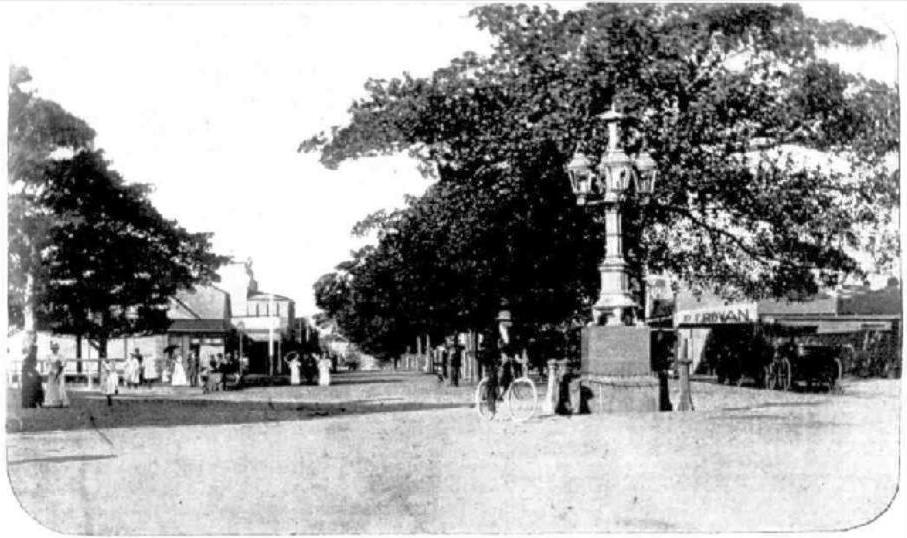
The 'interested opposition' referred to above can be glimpsed in the apparent word skirmishes between John Thomas Collins, of CollinsRetreat and Mr Jeanneret, who, with Mr Pile, was establishing the Newport Hotel during the years 1879-1880. See Newport Wharf and The Mail Route to Pittwater and Beyond
Confirmation of published as:
Manly and Newport, via Brady's, Jenkins's, and Boulton's, by coach; and Newport, Barrenjoey, Blackwall, Kincumber, and Gosford, by steamer, twice a week. In the event of bad weather preventing the steamer from crossing the bar, contractor will be required to convey the mails on horseback between Gosford and Patonga on the same day as despatched from Manly or Gosford. Contractors will also be required to bring the mails from Gosford and places en route, on from Manly to Sydney on the same evening as they are received at Manly-C. E. Jeanneret, 1 year, £270. ACCEPTED TENDERS. (1880, November 13). The Australian, Windsor, Richmond, and Hawkesbury Advertiser (NSW : 1873 - 1899), p. 2. Retrieved from http://nla.gov.au/nla.news-article66358071
Newport Hotel and Grounds, Pittwater, £1100-Mr Boulton, PROPERTY SALES. (1881, December 24). The Sydney Morning Herald (NSW : 1842 - 1954), p. 6. Retrieved from http://nla.gov.au/nla.news-article13501929
According to Alan Sharpe’s Pictorial Memories Manly to Palm Beach (1993), William Boulton arrived from the Kalgoorlie goldfields. Other sources state this was around 1871 or 1872 (Mona Vale Outrages - George Champion OAM) where he took over the lease of what was then called ‘Mona Vale Farm’. There also are records for two William Boulton’s out west of Sydney, one of whom had sons with the same name as our Newport gentleman, in the same years that they were born, who then seemed to disappear for a few years, perhaps the trip to and from the goldfields (?), and then reappeared – in what we now call Mona Vale - where two of his and wife Sarah Ann (nee Waters) last two children's births are registered at St Leonards and Manly. See these records under 'Extras' below.
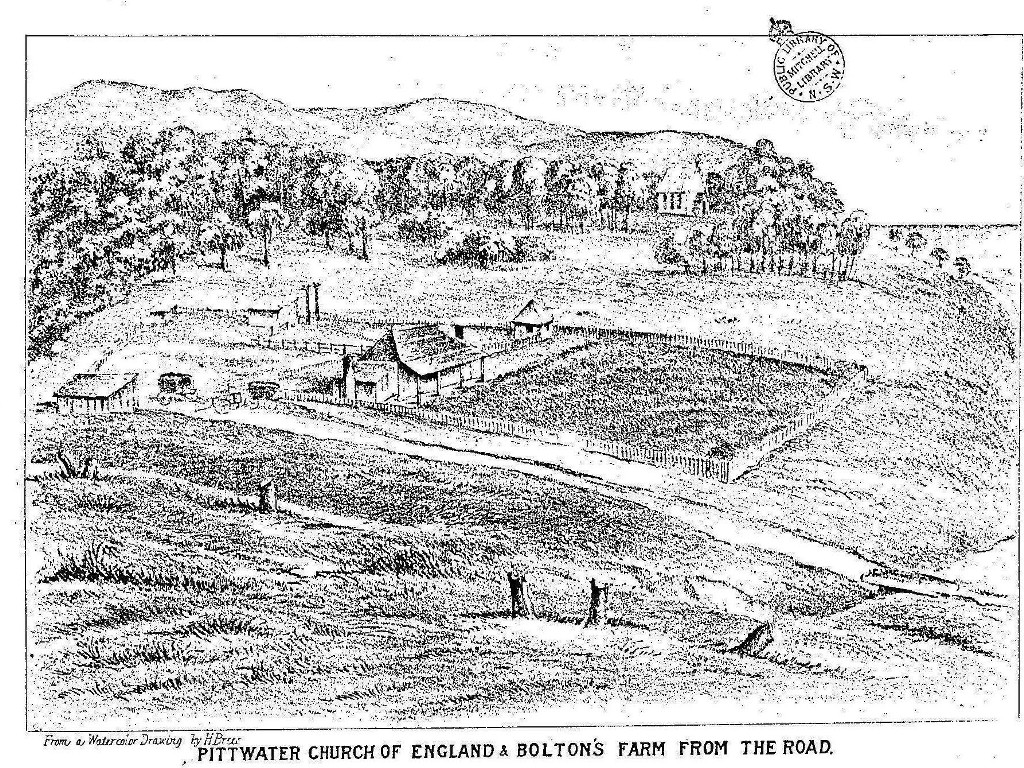
Although the licencees for the Newport Hotel changed Mr Boulton had enough sons to do the work of running a farm, and ensuring mouths were fed and equtiy accumulated, to keep on with the mail run and look after Royal visitors, for whom a road was almost built:
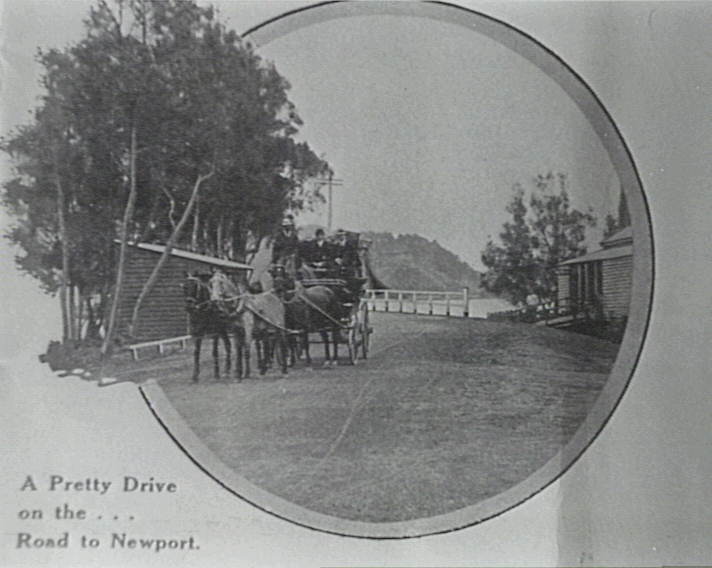 A Meeting of the residents of Pittwater was held on Saturday evening at the Bolton Hotel, for the purpose of urging the Government to-make the road from the Lagoon to Newport.Mr. Crawford, who was voted to the chair, explained the object of the meeting, and drew attention to tho state of the road, which in some parts was almost impassable. He stated that he was convinced it was only necessary to bring the matter under the notice of the Minister for Works to get the work done. After several speeches had been made, the following gentlemen were appointed to form a deputation to wait upon the Minister:-Messrs. Mc Koowa, Dr. Tibbitta, J. Riley, B. James, and F. Smith. NEWS OF THE DAY. (1883, March 28).The Sydney Morning Herald(NSW : 1842 - 1954), p. 7. Retrieved fromhttp://nla.gov.au/nla.news-article13531240
A Meeting of the residents of Pittwater was held on Saturday evening at the Bolton Hotel, for the purpose of urging the Government to-make the road from the Lagoon to Newport.Mr. Crawford, who was voted to the chair, explained the object of the meeting, and drew attention to tho state of the road, which in some parts was almost impassable. He stated that he was convinced it was only necessary to bring the matter under the notice of the Minister for Works to get the work done. After several speeches had been made, the following gentlemen were appointed to form a deputation to wait upon the Minister:-Messrs. Mc Koowa, Dr. Tibbitta, J. Riley, B. James, and F. Smith. NEWS OF THE DAY. (1883, March 28).The Sydney Morning Herald(NSW : 1842 - 1954), p. 7. Retrieved fromhttp://nla.gov.au/nla.news-article13531240Mount Loftus:
Yesterday morning a party from Government House and the detached Squadron made an excursion up the Hawkesbury, and for-tunately the weather was so fine that every lovely scene on the river appeared to the best advantage. The Royal Princes were of the party. At an early hour those engaging in the excursion left Man-of-war Stairs, and proceeded in the steam launch Nea to Manly, whence they were conveyed by Mr. Boulton's coaches to Newport. There they were received by Mr. Jeannerett on board the steam launch Pelican. Barrenjuey was passed about 11 o'clock. At Barrenjuey Mr. A. T.Black and friends were invited on board the Pelican, and the boat then proceeded up the river. The Detached Squadron. (1881, August 4). The Maitland Mercury and Hunter River General Advertiser (NSW : 1843 - 1893), p. 6. Retrieved fromhttp://nla.gov.au/nla.news-article819027
MANLY TO NEWPORT AND PITTWATER. Boulton's Royal Mail Coaches leave Manly every SATURDAY, at 3.30p.m., returning Mondays at 5 a.m. WILLIAM BOULTON, Newport Hotel, Newport. Advertising. (1883, June 15). The Sydney Morning Herald(NSW : 1842 - 1954), p. 9. Retrieved from http://nla.gov.au/nla.news-article13537010
Coach – Farrells and Boulton’s combined;
Visitors wishing to see the beautiful scenery on the noted Hawkesbury, second to none in the world for scenery and beauty, can start from Sydney every FRIDAY, 2.15 p.m. steamer to Manly, from Manly 3.16 to Newport, where passengers will find comfortable apartments for the night at Boulton's Newport Hotel. Steamer leaving Newport 6.30 a.m. Saturday, arriving Wiseman's Ferry 12 o'olook for luncheon, leaving 2 o'clock p.m., arriving Sackville Reach 5 p.m., where Underwood's coaches will convey passengers to Windsor Railway C.53 p.m., arriving in Sydney 0.3 p.m. Book Maddock's, 381, George-street. HAWKESBURY RIVER
Visitors wishing to see the beautiful scenery on the noted Hawkesbury, second to none in the world for scenery and beauty, can start from Sydney every FRIDAY, 2.1» p.m. steamer to Manly, Farrell's Coach from Manly 3.16 to Newport, where passengers will find comfortable apartments for the night at Collins' Retreat. Steamer Young Charlie, leaving Newport at 6. 30 a.m.Saturday, arriving Wiseman's Ferry 12 o'clock for luncheon, leaving 2 o'clook p.m., arriving Sackville Reach 6 p m., where Underwood's coaches will convey passengers to Windsor Railway 6.53 p.m., arriving in Sydney 0 p.m. Book Cole's, King and George streets Advertising. (1884, April 16).The Sydney Morning Herald (NSW : 1842 - 1954), p. 1. Retrieved from http://nla.gov.au/nla.news-article13571765
On FRIDAY, start for Manly by 2.15 p.m. trip, 1s each, by BLACK and CO.'S COACH, to Newport, staying at BOULTON'S NEWPORT HOTEL. Leave Newport, 7 a.m., SATURDAY, dine at WILBOW'S HAWKESBURY HOTEL. WISEMAN'S FERRY, thence steam to SACKVILLE REACH, whence CLEMENT HOUGHTON, of Richmond, meets party with coach and conveys them to WINDSOR, where they take tea and resume journey by rail, reaching Sydney about 7 p.m. N.B.-Passengers may leave Caledonian Wharf, 3 a.m., SATURDAY, if necessary. WEDNESDAY'S PASSENGERS. MAY STAY ON THE RIVER TILL SATURDAY. BOOK ONLY at THE TOURISM'S' BUREAU, .. BRIDGE STREET, where all expenses, including hotel accommodation, may be paid before starting.Advertising. (1886, September 29). The Sydney Morning Herald (NSW : 1842 - 1954), p. 2. Retrieved from http://nla.gov.au/nla.news-article13615890
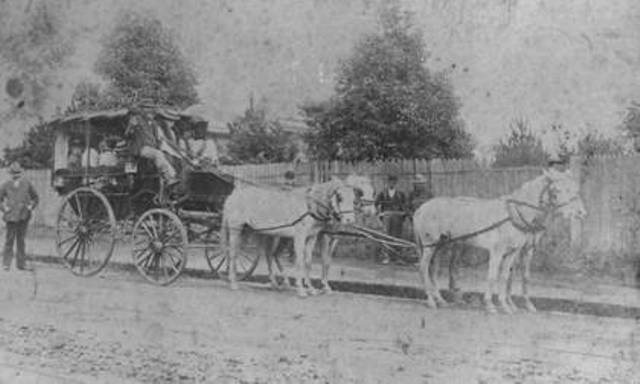
Joseph Black at Newport with passengers and the mail - courtesy Mr Black's family
DEATH OF AN OLD DURALITE. Mr. Joseph E. Black passed away at his residence, East Gosford, on Tuesday, aged 73 years. He had been ailing for the past six months, suffering from an affection of the heart. Deceased was born at Dural, where his people were well known fruitgrowers; and he was a member of a family consisting of eight sons and two daughters. Two brothers and a sister still survive. He leaves a widow, two sons and a daughter. The oldest son is head steward on the Ventura, and the other son is managing a station property on the Northern Rivers.
The late Mr. Black was a resident of Gosford for about 15 years, prior to which he was in business at Manly, where he conducted livery stables, and sold out when motor cars came into universal use. He was a genial, kind-hearted and highly-respected resident of the community, and his demise is genuinely regretted. The funeral took place on Wednesday afternoon, the remains being interred in Point Clare cemetery. — ‘Gosford Times.’ [Mr.. Black was a brother of Messrs J. E. Black, Ted Black, Fred Black and others of that well-known family.] DEATH OF AN OLD DURALITE. (1919, August 9). The Cumberland Argus and Fruitgrowers Advocate (Parramatta, NSW : 1888 – 1950), p. 6. Retrieved from http://nla.gov.au/nla.news-article86109859
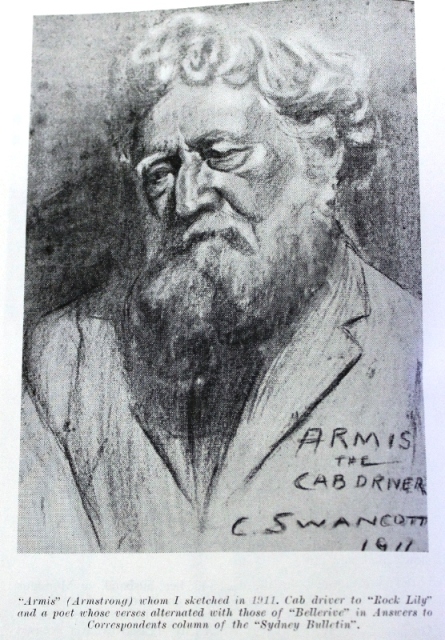 years' credit, bearing interest at the rate of 6 per cent, per annum. PURCHASERS CAN TAKE IMMEDIATE POSSESSION. _MILLS and PILE, Auctioneers, 130, Pitt-street. Advertising. (1887, June 7). The Sydney Morning Herald (NSW : 1842 - 1954), p. 11. Retrieved from http://nla.gov.au/nla.news-article13648145
years' credit, bearing interest at the rate of 6 per cent, per annum. PURCHASERS CAN TAKE IMMEDIATE POSSESSION. _MILLS and PILE, Auctioneers, 130, Pitt-street. Advertising. (1887, June 7). The Sydney Morning Herald (NSW : 1842 - 1954), p. 11. Retrieved from http://nla.gov.au/nla.news-article13648145TENDERS ACCEPTED. - The following tenders have been accepted : Conveyance of Mails. Manly, Newport, and Bayview, six times a week, and Newport and Barrenjoey, twice a week-Thomas Frost, coach, two or four horses, one year, £150 ; GOVERNMENT GAZETTE. (1887, December 10). The Sydney Morning Herald (NSW : 1842 - 1954), p. 7. Retrieved from http://nla.gov.au/nla.news-article13668076
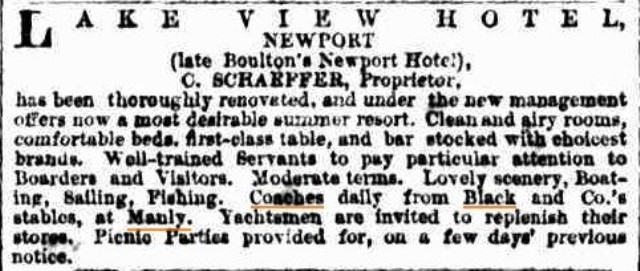
Schaeffer renames Newport Hotel 'Lake View' for his short tenure:Advertising. (1886, January 2 – Friday – same again on 8th Jan, 1886). The Sydney Morning Herald(NSW : 1842 - 1954), p. 5. Retrieved fromhttp://nla.gov.au/nla.news-article28359570

Picnic to Narrabeen Lake at Pier Hotel: Advertising. (1886, January 12).The Sydney Morning Herald(NSW : 1842 - 1954), p. 2. Retrieved from http://nla.gov.au/nla.news-article13608787
Charles Swancott in his book Dee Why to Barrenjoey and Pittwater describes the poetical mien of one of the gentlemen who was a coach driver (right) for the Rock Lily's robust and lusty and determined to make it work owner Leon Houreux
On Saturday afternoon, at the Rock Lily Hotel, Narrabeen, Mr. Leon Houreaux gave a dinner to celebrate the opening of his new line of coaches between Manly and Pittwater. The trip is a very pleasant one, and the vehicles are exceedingly comfortable. This line should prove a boon to residents in the locality of Pittwater. The Sydney Morning Herald. (1890, March 17). The Sydney Morning Herald (NSW : 1842 - 1954), p. 6. Retrieved from http://nla.gov.au/nla.news-article13763337
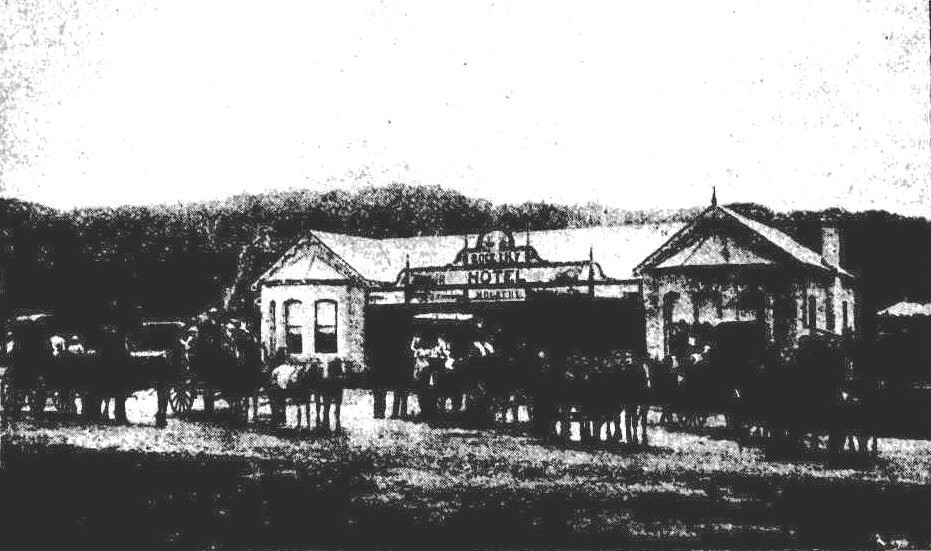
Having thoroughly explored the town, we will embark on one of Mr. Leon Houreux's magnificent coaches, which can he engaged for parties desiring a lovely drive by writing to the proprietor. His coaches are the best in New South Wales, and add to the enjoyment of the drive. As we bowl along the pretty country roads, we pass numerous charming residences, and also a haunted house. The Salvation Army have a resting house for then* hard-worked officers, which is beautifully situated on the side of a hill overlooking the sea. There is a stopping place at the Narrabeen Hotel, kept by Mr. Norris-a most charmingly situated hotel facing the road, the picture of which will give you a good idea of the number of travellers who frequent this place. Close to the hotel are the celebrated Narrabeen Lakes, where there is splendid fishing, shooting, and boating, to be had within a half-a-mile of the hotel. Mr. Norris makes a specialty of providing boats,camping outfits, lunches, &c, for parties coming from town to spend a day or two in this lovely district. After having partaken of light refreshments, a good assortment of which will be found here, we once more resume our journey, and after about three quarters of an hour's lovely drive through ;some of the prettiest scenery in the country we pull up in front of a most comfortable and picturesque hotel at Rock Lily, owned by Mr. Leon Houreux.. Madame Houreux is a most hospitable proprietress, and the rooms are most tastefully decorated in oil colors by Mr. Leon Houreux-stirring scenes on sea and land-the pictures well worth gazing at, not only from an artistic point of :view, but as curiosities in such a pretty wvayside inn. The gardens are laid out in good style. The tame and harmless native bear, the noisy laughing jackass, and the prying magpie are to be found here, making up a tiny and interesting menagerie. Mr.Leon Houreux evidently understands the way of catering for the public, as you can obtain the most récherché Parisian dinners here at a reasonable figure. After having partaken of a choice lunch, with a bottle of real French claret, of which he is an undoubted judge, you once more resume your seat on the coach, and proceed to Newport, to arrive there in time for tea, which has been already ordered at the pretty hotel kept by Mr. Thomas H. Hodges. This hotel is beautifully situated, and the view is well worth taking the journey alone to see. Opposite the hotel is Lord Loftus Point, which in tho olden days was evidently a favorite spot for aboriginal encampments. From here you have a splendid view of Pittwater, which is the widest arm of the Hawkesbury, being over a mile wide... There is also Scotland Island, which is celebrated for its fine fish. A Christmas Holiday Trip. (1893, November 25). Illustrated Sydney News (NSW : 1853 - 1872), p. 14. Retrieved from http://nla.gov.au/nla.news-article63104125
Mr. Black sells his business:
OMNIBUS PLANT, AT MANLY.
WILLIAM INGLIS and SON have received instructions from Mr H BOURKE Jun , to sell by auction, at MANLY BEACH (next to Pier Hotel), on MONDAY AFTERNOON NEXT, 4th FEBRUARY, AT 3 O'CLOCK P.M, The whole of that well-known 'bus plant (until recently-known as Black's line of coaches), and Comprising 10 horses in hard-feed condition, all thoroughly broken in
4 (a team) of cream ponies, broken to saddle and harness; 7 drags and waggonettes, with hoods; 1 omnibus car, carries 20 passengers; 2 sociables (one with hood); S S buggy; 14 sets double harness, 5 sets single harness; 2 sets buggy harness, sundry collars and harness, saddle and bridle, stable tools, &.C , &c; Also right of road from Manly Beach to Narrabeen, Rocklily, and Newport. Advertising (1895, January 30). The Sydney Morning Herald (NSW : 1842 - 1954), p. 8. Retrieved from http://nla.gov.au/nla.news-article13996528
VISIT PICTURESQUE NEWPORT From Manly to Rocklily, thence GREIG'S FREE COACH to Newport. Sundays and Holidays Free to Passengers dining at Greig's Hotel. Finest class Poultry Dinner. 2/. Advertising. (1901, September 29). Sunday Times (Sydney, NSW : 1895 - 1930), p. 1. Retrieved from http://nla.gov.au/nla.news-article125884293
VISIT ROCK LILY. Visitors to Sydney, or strangers passing through, should not fail to run out to the famous Rock Lily Hotel, Narrabeen. The hotel is noted for its gallery of curious paintings, its gardens and pleasure grounds, and its excellent French cuisine. Small parties can have private dining-rooms, whilst large parties are accommodated in the banqueting-room, which holds 200. The hotel is close to the beach, where good fishing and bathing may be obtained, and shooting can be had in the country round. The drive from Manly to Rock Lily (10 miles)is one of the most charming in New South Wales. Private vehicles may be hired at the Rock Lily stables at Manly, or visitors may go by the coach, which leaves Manly pier at 10 o'clock a.m., 11.15 a.m., and 4.15 p.m.—fare, one shilling only.Mr. Leon Houreux has been proprietor of the Rock Lily Hotel for twenty years. For any information, ring up Tel.- 134, Manly. VISIT ROCK LILY. (1901, December 22). Sunday Times(Sydney, NSW : 1895 - 1930), p. 10. Retrieved from http://nla.gov.au/nla.news-article125876704
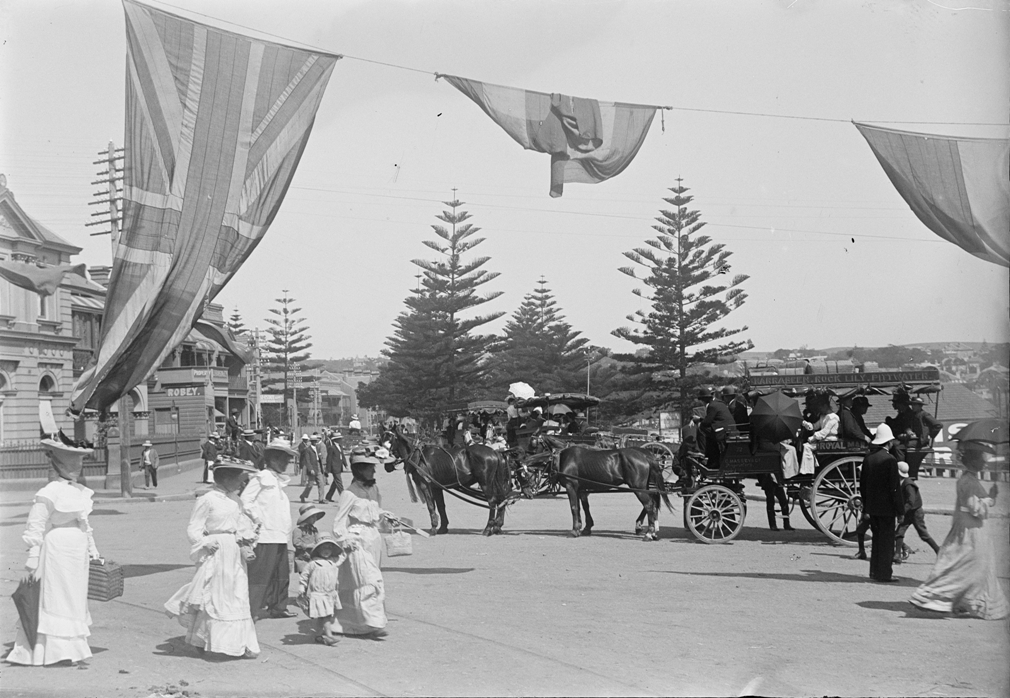
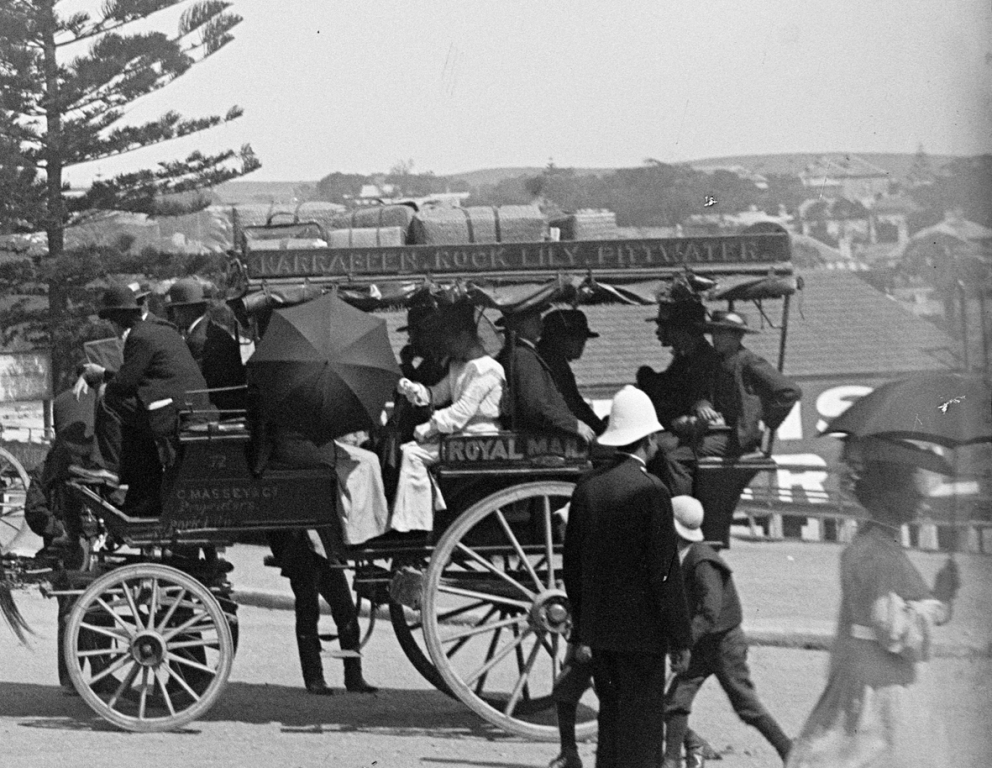
MOTOR BUS TRANSPORT Sydney's Modern Service Nearly 450,000 Carried Daily
Monday, April 23, marked the anniversary of the arrival of the motor bus in Sydney (says a Southern journal).It was on that date in 1907 that John. Williams, of 19 Macquarie place, Sydney and Bayview, walked into the Traffic Office of the Police Department, seeking a license to operate the first motor buses known to Sydney. Five French charabancs (Asters), he had bought from Bead Bros., of Manly, to run in opposition to the horse coaches.A policeman at the desk scratched his head. A motor omnibus? As if a horse -bus or tram weren't sufficient ! In law or the book of regulations there was no such thing as a motor omnibus. But John Williams was adamant. He sensed that the population on the route from Manly to Pittwater would be better served by a bus, and he would run it.Not even the tariff deigned to recognise the separate entity of this self propelled vehicle which it lumped under bicycle imports. But, by this or by any omission in the regulations' John Williams was undeterred- and he waited patiently for the simple right to ply for hire. The clerk scribbled in some records, and handed over a license under the Horse and Carriage Act. He produced, too, a horse driver's license, and wrote across it, for want of something better, the word 'mechanical.' John Williams examined them, and smiled, wondering whether he was not too far ahead of the times. The records of that venture, and its prior life under Read Bros., who apparently didn't worry about a license' are mainly memories now. John Williams is dead seven years, and scattered are the people who rode in his buses until he sold them out, his machinery junk and himself considerably dispirited.Development of 21 years, however, has lifted Sydney literally off its feet in a way that probably even John Williams, that man before his time, could not have dreamed.
BUSES AND TRAMS.
In March, 1928, when Sydney's entire tram service moved 901-214 passengers a day the private competitive omnibus services moved 449,876 passengers a day.This vast motor transport was done with 502 vehicles.The growth that comparison represents for the private bus has occurred mainly since 1920, when the new transportation got its greatest fillip.The number of licensed seats available in buses each day for travellers within the metropolitan area is 301,300. That is approximately three-quarters of the total passenger journeys a day. The excess of 147,885 passenger journeys a day does not mean an overcrowding of accommodation, although overcrowding at peak periods is inevitable today under the prohibit-on against any increase- in the number of buses on the road. A seat, while it may be used in theory once each bus journey, is utilised several times or by passengers at different times in a single journey.In 1921 Sydney operators put 182 buses on the streets, and the ratio of vehicles to operators was 2 to 1. Most intense competition prevailed in 1924 and 1925, when the police went at last deeply into the question of coordinating the bus services. In 1924, 173 operators entered the field with 531 buses. Then when there were more operators than at any time before or since, the ratio of buses to operator was 3 to 1. But by August, 1925, when the number of buses reached the peak
of 594, amalgamations and competition had eliminated 18 operators.Since then the number of operators' and buses has been steadily reduced.A larger bus, more comfortable and economical, has been evolved in the different classes of work, a considerably greater number of passengers are gradually being catered for. Today there are 502 buses and 117 operators.The biggest company runs 87 vehicles, the next 38, and a number of others 13 to 20.
WAGES REACH £750,000.
The development of motor bus transportation is not a mere matter of increased mileage or passenger journeys— figures with which to dazzle the mind. Its fluctuations have a close relation with the commercial life of the people than have possibly the rise and fall of traffic administered by the Government as a monopoly. This is because the people are more directly and individually concerned in ownership of or dealership in some instrument or other essential to motor transportation, and what threatens one section of the motor world has it repercussions in another.The latest figures of labour engaged directly in the maintenance and management of motor bus services of Sydney, show a total of 2610 persons. The wages paid annually to these is just under £750,000. Approximately 2000.homes are sensitive to any fluctuation in the fortunes of this transport. system. The annual turnover of these, based on figures compiled in March, is £4,096,-'000. An annual mileage of ,17,261,900, based on March figures, with all that it involves in petrol and oil consumption, wear and tear of parts and tyres, construction and renewal of bodies, means a constant demand for labour and materials in the allied motor industries.
IMPOSSIBLE POSITION.
It is difficult for the average citizen to regard with equanimity any diminution of the private services that have given him such rapid and comfortable transportation. It is difficult for the thousands who are directly and indirectly dependent on the private motor bus enterprise as wage, earners of one degree or another, to rest under the thought that governmental interference with this necessary transportation may yet grip Sydney as it has gripped other cities in the Commonwealth with disastrous results. Yet! Sydney's bus system today is threatened with what amounts to a briga adage.Although ever since the time of John Williams, in 1907, the Traffic Department has issued licenses to ply on particular routes — rights which are not subject to annual renewal, but continue uninterruptedly so long as the operators give satisfactory service —the suggestion has been made public several times that the State Government will take over the buses on July 1 or cancel their right to run on the main routes, without which, in many cases, the smaller routes could hardly be maintained. Trams under the present lay-out of the city cannot be expedited very well, but the speed and flexibility of the bus enables the latter to safely handle passengers in the heaviest of mixed traffic. Yet both are overcrowded (though not overloaded)at peak hours, and thousands are forced to suffer extreme discomfort. The Sunday Mail Special Motor Number. (1928, May 6). Sunday Mail (Brisbane) (Qld. : 1926 - 1954), p. 22. Retrieved from http://nla.gov.au/nla.news-article100128648
There was a John Williams and Sons was at Bayview wharf, but also another John Williams who later ran an ambulance service here – see Bayview Wharf history, and Pittwater Regatta Banishes Depression - 1933.
LOCALLY-MADE MOTOR OMNIBUSES. The first couple of petrol-propelled omnibuses made in this State— two others have been ordered — have just been completed at the coach works of C. J. Pittman, at Redfern, and are highly creditable examples of Australian workmanship. Save the chassis, which has been imported, everything else connected with the vehicles is of local manufacture. The two cars completed each have seating accommodation for 16 passengers, and' the other two will accommodate 12. It is expected that in a few days the finished coaches will be running between Manly, Rocklily, Pittwater, and Narrabeen; while the smaller ones are for use between Glen Innes and Inverell. The cars have four cross seats, on the charabanc principle, and passengers will be able to get in and out of the vehicle without inconvenience. A new feature in the arrangement of the seats is that each one is placed on a different level, rising towards the back of the vehicle, each seat being about 21/2 in higher than the one immediately in front. This arrangement will be much appreciated by the travelling public, as those at the rear will have an equal view with those in front. The finish of the vehicles Is In excellent taste, the bodies being painted in Surry-green, lined with carmine, the undercarriage being also carmine-coloured. The upholstering is in the best leathers and the spring cushions have been provided. A canopy is also supplied, supported by eight tubular columns, the front part being fitted with four panes of glass in front of the driver. The canopy is convex on top, and possesses a luggage roof, which will support passengers' belongings up to half-a-ton in weight. Roll up curtains of tan-coloured canvas, very similar to those in use on the electric cars, are provided. The woods used in the manufacture are all Australian, and comprise blackwood, silkypak, kauri pine, cedar, and spotted gum, are simply varnished. The motor power of each vehicle is 22 horse-power. LOCALLY-MADE MOTOR OMNIBUSES. (1906, January 26). Evening News (Sydney, NSW : 1869 - 1931), p. 7. Retrieved from http://nla.gov.au/nla.news-article114227702
MOTOR BUSES. The many comments made regarding the unfortunate result at the introduction by the Government of motor buses have to a very large extent biassed the opinion of the public in regard to their suitability for passenger traffic (.writes Mr. E. E. Kennedy, secretary to the Manly-Pittwater Motor Omnibus Company),but we can state that an altogether different state of aliairs exists in connection with the Manly-Pittwater Company's buses, as they have proved a pronounced success since their introduction. This company was formed to acquire from the Messrs. Reid Brothers, of Manly, their petrol motor drags (or charabancs), and have been running to Narrabeen.for the past four months, and since the middle of last month the run has been extended to Rocklily and Bayview. The few hitches at the commencement of the running were due entirely to tyre troubles, but that difficulty has been overcome by using wider tyres, which was necessary owing to the rough condition of the roads. The roads in this district are in great need of repair, and are altogether far too rough for ordinary traffic; yet the company's drags run regularly with full passenger loads,and negotiate the famous 'Sheep Station Hill'-with ease, which clearly proves the suitability of these petrol cars, for this class of heavy work.At the invitation of Mr. John Williams, director of the company, a party of gentlemen, which included Mr. C. H. Kerry (chairman of the company), Messrs. Henry Deane (M. Inst.,C.E.), P. Burrows, E. D. Pike, W. Speechly, Captain Talbot, and T. F. H. Mackenzie, M.L.A.,visited Bayview last Thursday in one of the motor drags. The roads were exceptionally heavy, owing to the late rains, but a good run was made to Bayview, where Mr. Williams' launch was in attendance to convey the party over to his private residence, near Scotland Island. After lunch the return trip was commenced, and the run back to Manly was accomplished in 45 minutes. The visitors were highly delighted with the cars. The directors are now making arrangements to place four more motor omnibuses on the route to Narrabeen, Rocklily, Bayview, and Newport, and from Manly to the Spit. MOTOR BUSES. (1906, May 7). Evening News (Sydney, NSW : 1869 - 1931), p. 6. Retrieved from http://nla.gov.au/nla.news-article114318129
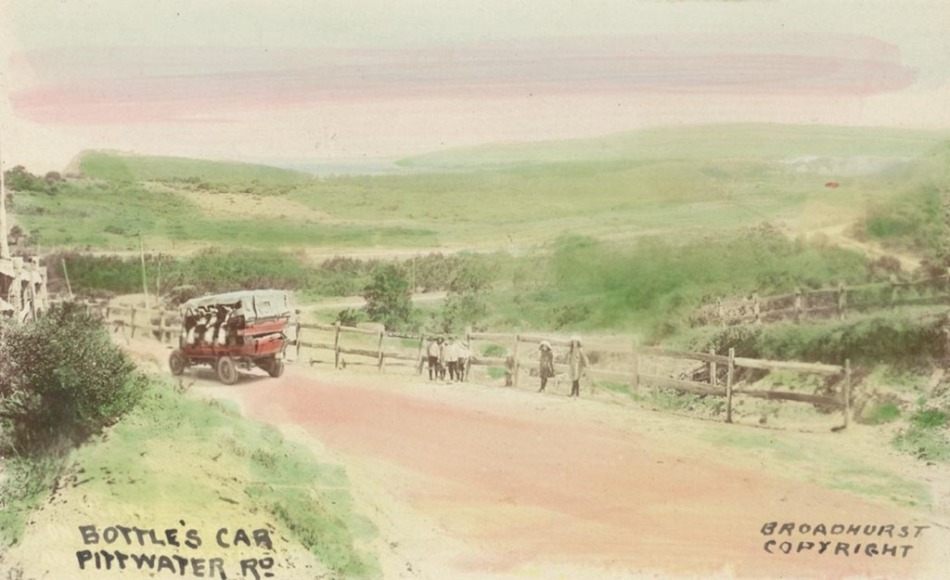
MOTOR OMNIBUSES. THE MANLY-PITTWATER, SERVICE. INAUGURAL RUN.
The two motor buses recently imported from England for the service between Manly, Rocklily, Bayview, Newport, and Pittwater, made their initial trial on Thursday afternoon last. The run was to the residence of Mr. Brock, of Newport, and return to Manly, a distance of 23 miles. The 'buses, which were imported to the order of Messrs. Reid Bros., of Manly, are likely to be handled by a company, known as the Manly-Pittwater Motor Omnibus Company, Limited, with a capital of £8500. It Is the intention of the company to shortly Import a number of similar vehicles, as well as some steam 'buses, to tap the various populated districts at present badly supplied with tram or horse 'bus service. Manly was en fête for the occasion on Thursday, and a big crowd assembled at the Pier Hold to witness the start, which took place at 2.20 p.m.
Amongst those who took part in the trial were Mr. Dugald Thomson, M.P., Dr. Arthur, M.L.A., Mr. F. F. H. McKenzie, M.L.A., Alderman Quirk (Mayor of Manly), Alderman Walker, Alderman T. J. West, Alderman Lear Bioiinth, Alderman Ogilby, Messrs, S. L. Ridge, Charles H. Kerry (director of the Motor Company), E. E. Kennedy (secretary to the company). E. A. Laurence (of Laurence and Laurence, solicitors to the company), John Bennett, Wm. M'Leod, Daniel Farrell, H. T. Roby George Rodda (of Adams and Co.), Alexander Edward (secretary to the. Traffic Commissioners), D. S. K. Millar (Bank of New South Wales), W. J. Bradley, and Mr. Houreaux.
As the buses left Manly for Newport with 16 passengers on board each vehicle there was much enthusiasm, and it was evident that the introduction of the latest form of propelled vehicle was highly appreciated by the residents. Flags were flying from various buildings and arches had been erected at various part's of the road. As the 'buses made their run towards Newport several other petrol vehicles escorted the now service. All were gaily decorated out of compliment to the new Motors. There is little doubt that with a good and quick service many people will soon make the trip. Considering that the buses were shod with solid tyres the run was very smooth throughout.
The first 'bus, with the "Herald" representative on board, reached Mr. Brock's residence at 3.9 p.m., having covered the 11 ¼ miles in 49 minutes. There had been no rushing in the journey, as it was the intention of the owners to allow the party to view the magnificent scenery en route. With the exception of a slight delay at Sheepstation Hill, owing to the fan belt slipping off the pulley, the run made by the first bus was a delightful one, and must be deemed very successful. Unfortunately, the second 'bus had not quite so good a journey, as the carburetor stopped up when near Sheepstation Hill, and a halt had to be made. It took the chauffeur a considerable time before the obstruction in the petrol feed tube was removed. The delay was most vexatious to Messrs. Reid, who had already accomplished several journeys without a stop. It was especially unfortunate that the stoppage should have occurred in the inaugural run, as such things often tend to dishearten enthusiasts. Considering that the buses are as yet practically new, and that they will not be In thorough working order until they have covered at least a couple of hundred miles, the speed and hill-climbing capabilities displayed during Thursday's run must be deemed excellent.
DESCRIPTION OF THE BUSES.
Each bus is fitted with a 22-h.p. Aster engine, 4-cylinder rod, and wilh the cylinders cast separately. The full power of the motor is got at 1000 revolutions, but the speed may, be brought down very low by the manipulation of the throttle. The engine Is supported In the chassis by two strong channelled steel stays running from one side to the other, thus keeping the motor firm and secure. Elseman high tension magneto with synchronised Ignition is fitted, the accumulator and coil supplied extra being carried as a standby. Each of the four cylinders Is run from one coil by means of a distributor, and the switch fitted on the dashboard enables the chauffeur to turn on or off either Ignition at will. The manipulator of the spark and throttle Is of the latest type, being attached to the steering wheel, so as to allow the driver easy control. The change speed gears being at the driver's right hand allow easy management. As regards the chassis, It Is made of pressed steel, of U section, and narrowed In front, so as to allow a bigger wheel look. The length of the frame is 15ft 7in, and the width 4ft 9in, while the wheel base Is approximately 11ft the latter width being practically that of an Astrallan waggon track. The weight of the respective models turns out to be a little more than expected for a single-decker, totalling altogether 2 tons 5cwt for chassis and body. There is little doubt that the wood work In the motors is substantial, but had a little less solidity been supplied they might have been bettor. The artillery wheels fitted to the 'buses are strong, and, having solid forged axles, there is little likelihood of any injury to them. The drive is by chain, a stout 3in block chain being fitted on each side. The chain may be tightened when required by means of a substantial radiating rod. The springs of the vehicle,, though apparently strong, proved on the running to be just a trifle weak for the Manly-Newport road, and one could often experience at certain places slight Jars. It would certainly be advisable to have an extra leaf or two of spring put on.
Each 'bus is fitted with three speeds and reverse. Between the differential and the gear box is a strong coupling shaft with two flexible joints. The Panhard system of gearing with direct drive on the top is employed, and the estimated greatest speed is about '20-25 miles an hour. ' As regards the water circulation, this is supplied by means of a powerful pump. Tubular radiators and a large fan driven by bolt off the shaft help to keep cool the engine. The brake work on each chassis is of the external band type. Although for heavy vehicles the Internal expanding system of braking Is to be preferred, those on the new 'buses seemed very effective, and were able to pull up the latter quickly when descending some stiff gradients. The tyres, which are solid, were turned out by the Dunlop Company. It is a pity the company who purpose running the buses did not see their way to fit twin tyres on the rear wheels, as the wearing qualities of the latter are superior, and there is loss likelihood on the part of the vehicles to skid.
As regards the body part of the respective Cars, the design and finish seem simple, yet neat. In each 'bus there are four cross seats, each vehicle being capable of accommodating about 16 to 18 passengers. A very desirable feature about the seats Is that each of the four rows Is placed on a different level,
the back one being the highest. This arrangement enables each back row of passengers to have an equally good view with those In front. There is a canopy, with convex roof, fitted to each car, and supported by tubular Pillars. To protect the driver or passengers in dusty or rainy weather, two folding glass
panels can be lowered, as can the folding side blind. The finish of the vehicles is In excellent taste, the cars being upholstered In dark green leather. The woodwork Is painted dark chocolate with yellow lines on one model and dark green with light lines on the other. A luggage carrier is fitted on the top of the canopy.
SUCCESS OF THE SERVICE ASSURED.
When the buses reached Mr. Brock's residence refreshments were served, after which some photographs of the new vehicles with the passengers aboard were taken. Mr. Quirk, Mayor of Manly, occupied the chair, in the course of his remarks he said that every credit was due to Messrs. Reid for having had the courage to Import motor 'buses.

Dr. Arthur, M.L.A., in supporting the toast, said he was a humble admirer of anything In the shape of enterprise. Ho thought the Manly-Pittwater buses would be a decided acquisition to the neighbourhood. He characterised Pittwater and the surrounding neighbourhood as one of the loveliest districts in this State, and hoped the present buses would be compared favourably with those at present in Sydney, would always be kept busy.
Mr. M'Kenzie, M.L.A., also spoke, and pointed out the necessity that existed for proper communication, between Manly, Newport, and district. He had no doubt that in a short time many more similar buses would be in use.
Mr. Cried responded and spoke of the initial difficulties in inaugurating the service. He was perfectly satisfied that once the novelty had worn off the present buses they would successfully cater for the demands of the Manly and Pittwater residents.
MOTOR OMNIBUSES. (1906, February 10). The Sydney Morning Herald (NSW : 1842 - 1954), p. 17. Retrieved from http://nla.gov.au/nla.news-article14732737
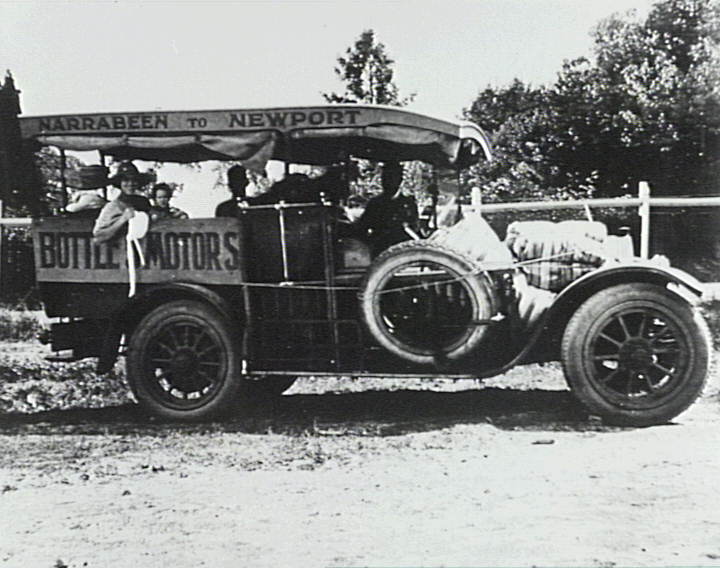
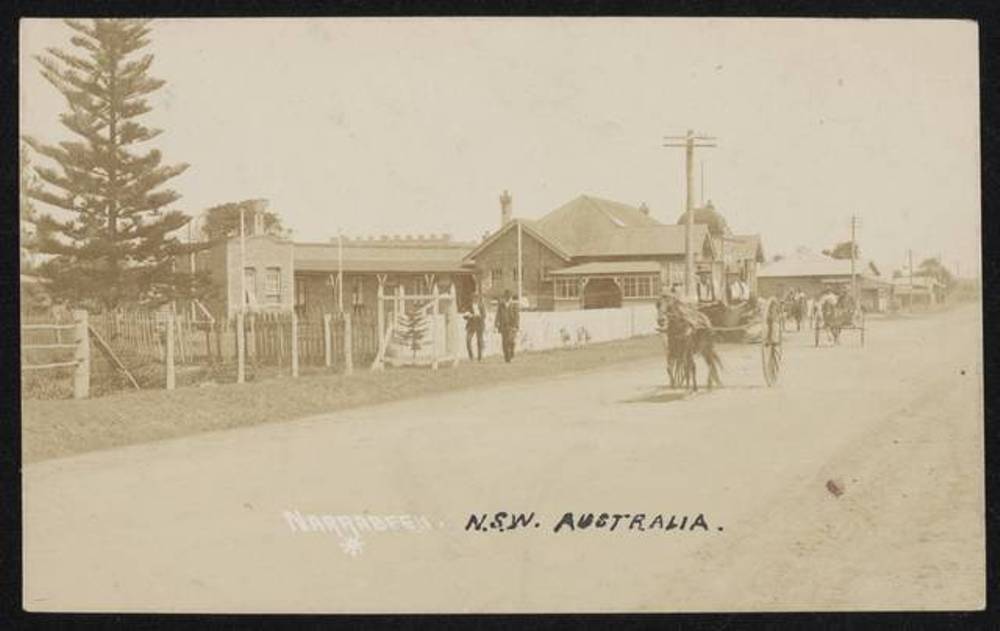
This enterprise was very short lived. In 1907 the company was offered for sale.
The local 'coach company' was connected with the Rock Lily:
SENSATIONAL COACH SMASH. COLLISION NEAR NEWPORT.
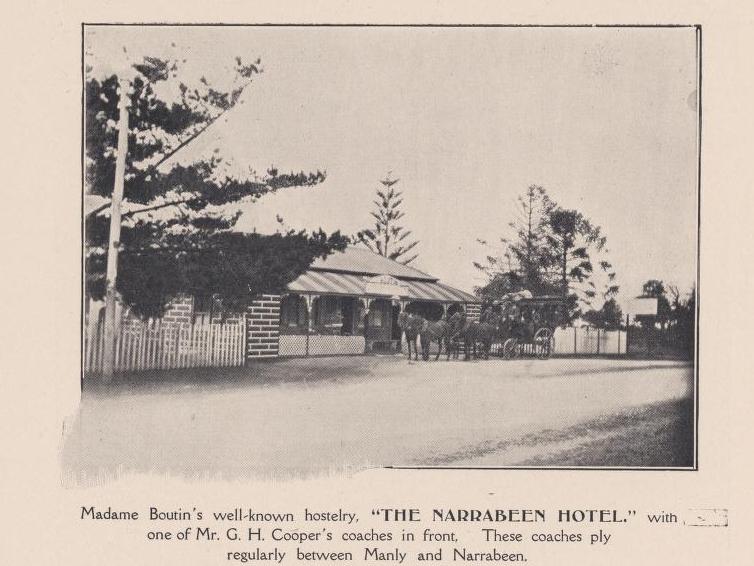
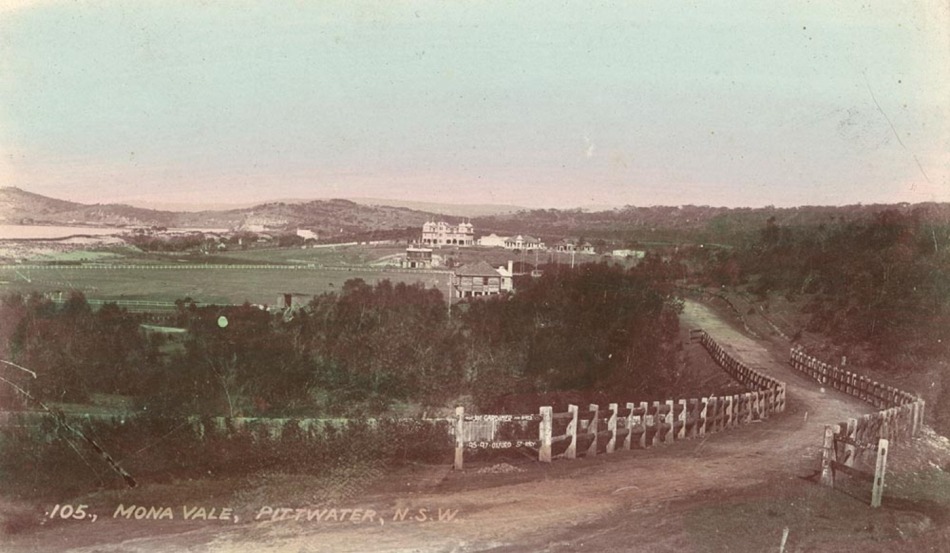
Mona Vale, Pittwater, N.S.W.ca. 1900-1927, Image No.: a106170h, courtesy State Library of NSW.
1. THE ROCK LILY HOTEL, A WELL-KNOWN HOLIDAY HOUSE, standing In its own grounds, having frontages of 170 feet to the PITTWATER-ROAD, and 205 feet to VINEYARD STREET, all the Recreation Rc«erve opposite,having 112 feet frontage to the PITTAVATER-ROAD, with an average depth of 276 feet, situate close to the junction of BAY VIEW and NEWPORT ROADS.The House Is built of brick, on brick foundation, with verandah In front, and wide verandah and grape treíllis at side, and containing hall, bar, 2 dining rooms, 4 private dining rooms, sitting room, parlour, servants' dining room, 5 bedroom B/S.aervants 'bedrooms, store room, 2 lavatories, kitchen, wash-house, cellar in basement, detached bathroom.
IMMEDIATE POSSESSION.
The LICENSE and GOODWILL go with the Property.
THE TRAFFIC to and from Pittwater at WEEKENDS and during the HOLIDAY SEASON is very CONSIDERABLE, and as the drive from Manly is comfortably- undertaken by MOTOR OMNIBUS or by UP TO-DATE COACHES, MANY VISITORS are ATTRACTED to the DISTRICT. As a SEASIDE RESORT in the hands of an ENERGETIC MAN the ROCK LILY HOTEL might be made one of the FIRST SEASIDE HOUSES north of Sydney.
2. EXTENSIVE COACHING STABLES, occupied by Messrs. Cooper and Co., Coach Proprietors. They comprise stable (24 stalls), coachhouses, workshops, blacksmith's forge, shelter sheds, feed rooms, etc. .
THE LAND abuts on to the hotel site, and has 324 feet frontage to VINEYARD-STREET, with a depth of 160 feet
3 NEWPORT. A WATERSIDE PROPERTY, comprising Lots 4 to 7, Section E, Newport Township, having 264 feet frontage to BEACONSFIELD-STREET, with a depth of over 200 feet, extending to the WATERS of PITTWATER, together with the weatherboard COTTAGE and UNFINISHED STONE RESIDENCE thereon. By Order of the Executrix of the late LEON HOUREAUX.
RICHARDSON and WRENCH, Ltd., will sell by auction at the Rooms, Pitt-street, on FRIDAY, 27th SEPTEMBER, at 11 o'clock, The above attractive properties at PITTWATER. Advertising. (1907, September 7). The Sydney Morning Herald(NSW : 1842 - 1954), p. 25. Retrieved from http://nla.gov.au/nla.news-article14879141
Guy Jennings in his book ‘A History of Newport’ reports this two storey stone house to the left in picture was never finished and became a playground for children. Fence opposite is that of Newport Public School. The unfinished house described above, soon after Mr Houreax's passing and offered for sale, and that in this photograph, seem very alike. Scrutiny of early Land Maps also points to this structure.
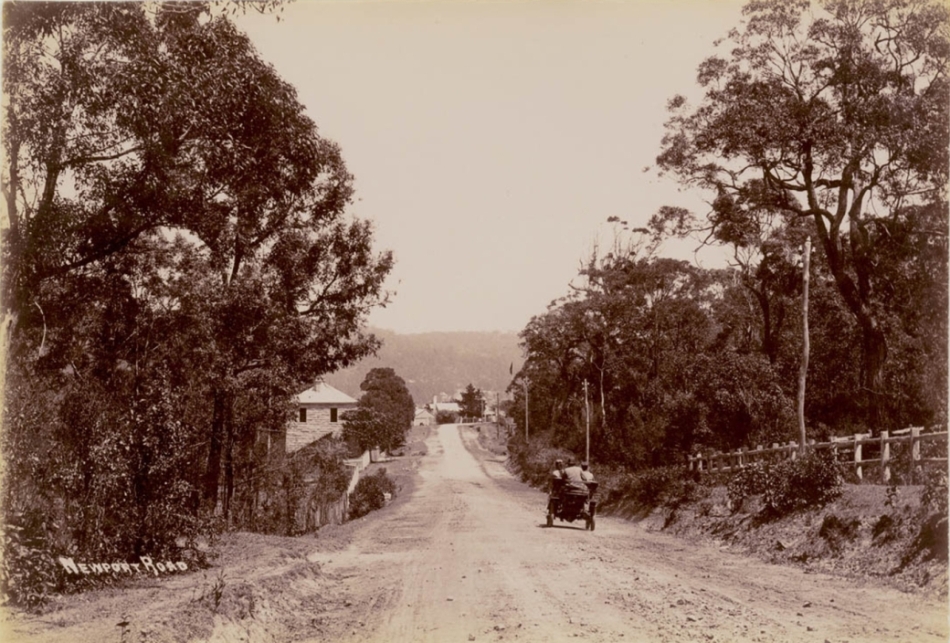
'Newport Road' - ca. 1900-1910, Image No.: a116490h, courtesy State Library of NSW.
The local lads weren't the only ones having problems with the tracks, and at times this led to litigation. Charles Massey now had the contract to run the mails to Pittwater, but there were still all the competition runners all striving to carry the thousands of people who would journey to Pittwater during the summer months and for respite during the cooler months, and some names seemed to pop up more often then others:
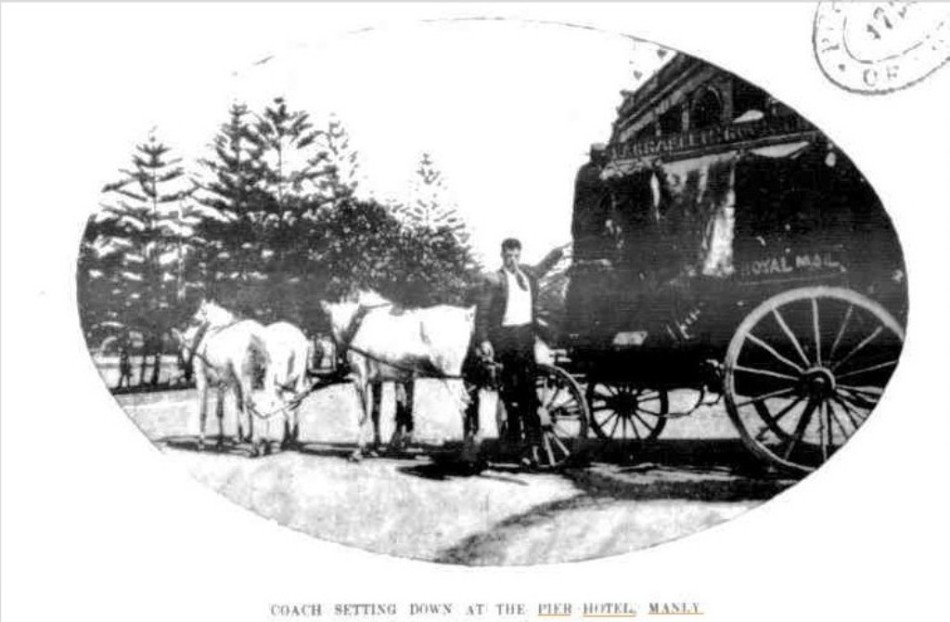
COACH SETTING DOWN AT THE PIER HOTEL, MANLY. No title. (1904, December 17). The Australasian (Melbourne, Vic. : 1864 - 1946), p. 30. Retrieved from http://nla.gov.au/nla.news-article140776517
COACH OVERTURNS. TWENTY PASSENGERS THROWN OUT. SYDNEY, Sunday.-While the coach from Newport to Manly, in which were 20 passengers, was descending the hill this evening, one of the wheels skidded. Under the strain another wheel collapsed, and the coach overturned, all the passengers being thrown out. There was much confusion, but only four of them sustained injuries. Mrs. Kate Greenlees, of Palmer-street, Woolloomooloo, had a bone in her shoulder fractured, and she was taken to the Manly Cottage Hospital. Her husband. Mr. John Greenlees, was injured on the knee. Mrs. King, of Newport. was much hurt about the face, and Mr. Frederick Dalley, of Manly, sustained injuries to his back. COACH OVERTURNS. (1910, February 21). The Argus(Melbourne, Vic. : 1848 - 1957), p. 7. Retrieved from http://nla.gov.au/nla.news-article10836444
Capsize of a Coach.FOUR PASSENGERS INJURED.By Telegraph from Our correspondent,Sydney, February 20.A coach from Newport to Manly containing 29 passengers, and drawn by four horses, was descending a steep hill at Deewhy, today, when the driver attempted to avoid a piece of newly metalled road and ran the coach into some sand. One of the rear wheels collapsed, the coach overturned, and four passengers were injured. Capsize of a Coach. (1910, February 21). Queensland Times(Ipswich) (Qld. : 1909 - 1954), p. 5 Edition: DAILY. Retrieved from http://nla.gov.au/nla.news-article112015206
Accident to a Manly Coach. PASSENGER CLAIMS £200 DAMAGES. An accident which happened on the afternoon of Sunday, February 20 last, formed the subject of an action before Judge Murray and a jury of four in the Sydney District Court this morning, the plaintiff being Joseph Jeffrey, electrician, of Market-street, Sydney,trading as 'Joseph Baker,' and the defendants the Manly Livery Stables, Limited,which ply a line of coaches between Manly and Newport. Mr. W. A. Walker (instructed by Mr. Neville W. Montague) appeared for the plaintiff; and Mr. R. Windeyer (instructed by Messrs. Stephen, Jaques, and Stephen) for the defendant company.The case for the plaintiff was that on the day in question Jeffrey and his wife were passengers by the defendants' coach from Newport to Manly, occupying the box seat. On the Dee Why Hill the coach capsized, and plaintiff, his wife, and a number of other passengers were thrown to the ground. Plaintiff had his left leg severely injured, and for nearly four months he had been under medical treatment. He alleged that the capsize was occasioned by the coach having unsafe axles and wheels, and by overloading, and for the injuries he had sustained he claimed £200 damages .The defendant company pleaded not guilty.(Proceeding.) Accident to a Manly Coach. (1910, June 27). Evening News(Sydney, NSW : 1869 - 1931), p. 6. Retrieved from http://nla.gov.au/nla.news-article115240305
DISTRICT COURT. (Before Judge Murray and a jury.) JEFFREY V MANLY LIVERY STABLES, LTD.
Mr. W. A. Walker, instructed by Mr. Neville W. Montagu, appeared for the plaintiff; and Mr. R. Windeyer, instructed by Messrs.Stephens, Jaques, and Stephens, for the defendant. In this case Joseph Jeffrey, carrying on business at Market-street, Sydney, under the name of Joseph Baker, electrician, sued the Manly Livery Stables, Ltd., of Manly, for the recovery of £200 for injuries alleged to have been received in a coach accident. In his statement of claim, plaintiff set out that he was a passenger on defendant's coach from Newport to Manly, but owing to the negligence of the defendant the coach had inefficient, weak, and unsafe axles and wheels,was overloaded, and was driven off the mainroad upon insecure and uneven ground. As a result the coach broke down, and the plain-tiff was thrown out and was permanently injured in tho log, and had Incurred expense formedical attendance, and would be prevented from attending to his business in future. The case stands part heard. DISTRICT COURT. (1910, June 28). The Sydney Morning Herald (NSW : 1842 - 1954), p. 5. Retrieved fromhttp://nla.gov.au/nla.news-article15131532
THE BAYVIEW COACHES. The residents of Bayview and Newport want an earlier and a later coach to Manly. The subject was before the last Manly Council meeting, when a petition was read from residents of the district, pointing out their wants. An alderman said that the proprietors of the present line had recently raised the fares. It was thought a great improvement could be .......Superintendent Edwards, of the Traffic Department, forwarded the correspondence on the matter, and asked the council to express an opinion on an application made by the Manly and Balgpwlah Coach Company, to ply a coach leaving Bayview at 7 a.m. and Manly at5.45 p.m. Mr. Edwards pointed out that some years ago when two lines of coaches were running it was certainly not in the interests of the general public of Manly and the district. The Manly Livery Stable Company, who has the right of the road at present, wrote, saying that they were willing to provide any additional vehicles considered necessary to meet any reasonable regulation of traffic. At the same time the number of passengers at this time of year was very small. The company was willing next summer to make any alteration in the time-table considered justified. The writer trusted that no licence would be granted to any other proprietary. As the matter had been under consideration by the Warringah Shire Council, the aldermen came to the conclusion that it would be wise to await the result of their deliberations. THE BAYVIEW COACHES. (1909, June 16). Evening News(Sydney, NSW : 1869 - 1931), p. 8. Retrieved fromhttp://nla.gov.au/nla.news-article115495066
Article: THE BAYVIEW COACH. (1909, June 30). Evening News(Sydney, NSW : 1869 - 1931), p. 9. Retrieved fromhttp://nla.gov.au/nla.news-article115499886
MANLY TO BAYVIEW COACHES. At a recent meeting of the Warringah Shire Council a letter was received from the Traffic Branch of the Police Department asking the council's opinion on the question of running another line of coaches from Manly to Bayview and Bayview to Manly- later and earlier than the present coaches run Consideration of the matter was deferred to the last meeting when the council was in receipt of in application from the Balgowlah District and Manly Coaching Company to be allowed to run a line of coaches to Bayview, to leave Manly in the evening at 5.45 and Bayview at 7.45pm A letter stated that the company intended to reduce the fares to 1s to Rocklily and 6d to Church Point . A letter was also received from the Manly Livery Stable Company signifying their intention to reduce the fares to residents and to run an earlier and late coach from September 1.
On the motion of Councillor Quirk it was agreed to support the application of the Balgowlah District and Manly Coaching Company on the grounds that a coach at the proposed hours would suit the requirements of the district. MANLY TO BAYVIEW COACHES. (1909, July 6). The Sydney Morning Herald (NSW : 1842 - 1954), p. 8. Retrieved from http://nla.gov.au/nla.news-article15070033
Bayview to Manly. EXTRA COACHES ASKED FOR.
At a special meeting of the Manly Council, the aldermen dealt with the question of running extra coaches from Manly to Bayview between the hours of 5 and 6 p.m., and from Manly at about 7 a.m. The application is made by the Manly and Balgowlah Coach Company, an opposition line of conveyances to the 'coaches having the present right of the road, the Manly Livery Stables 'Company. There was a large attendance of interested spectators, as the new company is largely composed of Manlyites. At the start of the business Mr. Hogan, the council clerk, announced that he was in the receipt of telephone communication from Mr.Edwards, the Traffic Superintendent, that the matter had been settled by the Inspector General of Police. The request of the people of the district had been agreed to, and that the Manly Livery Stable Company (the old company) had been granted the right of arranging the trips. A couple of letters from residents were also read, pointing out the necessity for better communication with the district. On busy days the present coaches were not able to cope with the traffic. Fully 150 people had walked to Manly on a holiday, after being taken down by the 'buses, or had waited till next day.Alderman Quirk animadverted on , the peculiar message sent to the council by Mr. Edwards, regarding the Inspector-General settling the matter. He moved — -'That the Superintendent of the Traffic Department be informed that, in the opinion of this council, the application ofthe Manly and Balgowlah Coach Company to run a conveyance from Manly to Bayview, between the hours of 5 and .6 p.m., and from Bayview to Manly about 7 a.m., should be granted, and the resolution dealing with the above matter negatived at last meeting of this council be altered to that effect.' He said it was sufficient for him that the people of, the district of Newport wanted the extra coach accommodation. They were wholly interested, and the residents of Manly only indirectly so.' the motion were not carried, they would do the residents of Bayview and Newport an injury for which they had no redress. At present visitors to Bayview were not given time to enjoy the beauties of one of the most picturesque spots in New South Wales. Alderman Mulligan seconded the motion, and Pointed out that he thought the Manly Council should be the body to settle this matter, and not the police authorities. He hoped the council would agree to the new line of coaches, as the easier the mode of communication, the more people would visit the picturesque locality. Alderman Russell moved an amendment, to the effect that no licence be granted to run the extra coaches, and asked how often did the present 'buses run down to Newport only half full. There was always a crowd on holidays and Sundays, and he had no consideration for people left behind. Alderman Patison, who seconded the amendment, had to withdraw a statement styling some of the aldermen renegades. 'The present company, he said, was complying with every wish of the residents, and was quite prepared to give every concession necessary. Alderman Heaton supported the motion, and said every fine Sunday numbers of people were left behind, owing to there being no late coach to Manly. Sometimes conveyances had seven or eight passengers riding on the top. Alderman Ogilvy said he was of opinion that the beauty spots in the district should have better access. '' ,An opponent to the motion was found in Alderman Dargan, who said no one travelled down the district more than he did. There was no doubt the residents wanted the extra coaches. In fact, they wanted all the vehicles on the road they could get. It was the city public that filled the coaches. As a matter of fact; one of the beach donkeys could take all the Manly people who travelled. The Mayor said he had carefully watched the coaches the last week leaving and arriving at Manly, and he had come to the conclusion that a second line of conveyances was not required. On any holiday the company could put on extra buses to meet the rush. He was sorry he could not support the proposal; .. and if he could see any reason for a second -line of coaches he would gladly do so. Alderman Quirk having replied, the motion was put, and the voting was 4 for and 4 against.The Mayor gave his casting vote against it, and declared it lost. Bayview to Manly. (1909, July 16). Evening News (Sydney, NSW : 1869 - 1931), p. 9. Retrieved from http://nla.gov.au/nla.news-article114768274
MANLY TO BAYVIEW.
TO THE EDITOR OF THE HERALD.
Sir,-Referring to an item of news in your columns, headed "Manly to Bayview," in which it Is stated that the Mayor of Manly gave his casting vote against the proposal of an opposition company to put extra coaches on this most popular run, surely such an act denotes lack of enterprise on the part of the Mayor and a few of the aldermen of Manly. It Is conceded by those who are qualified to give an opinion that Bayview and the beautiful surroundings of Pittwater must continue to 'remain a "sealed book" so far as the general public is concerned until better and more 'frequent communication is established. The coach service to-day is the same as it was 10 years ago, sluggish and expensive, and unless the Government comes to the rescue no improvement is possible. If a single concern is allowed to have control of the road under present conditions the coaches will be run to suit those interested, and not the public.
Monopolies do no good for the people. I am of opinion that the Transit Commissioners should consider the interests of the general public, who are clamouring for a better service to Bayview. The old standing complaint of the residents of Pittwater is the want of a later coach from Manly on week days than 4.15 p.m., and one to leave Church Point at about 5 p.m. The proposed now company intended, I believe, to fill the gap by providing coaches about the time stated. Then, what reason could the Mayor have for voting against such a proposal?
I am a supporter of the coaches both in winter and summer, and, with many others, would like to see a change In the time-table to suit present requirements. The one in existence was all right 10 years ago.
I am, etc.,
WM. RUMMELL MANLY TO BAYVIEW. (1909, July 27). The Sydney Morning Herald (NSW : 1842 - 1954), p. 5. Retrieved fromhttp://nla.gov.au/nla.news-article15077087
Manly District and Balgowlah Coaching Company, Ltd , has been formed, with a capital of £5000 In £1 shares, and 1000 of these shares are Issued as fully paid up, to adopt and carry into effect an agreement between William Todd and Frederick George Carter, and to acquire a license to conduct a coach service between Manly and Balgowlah. The managing director of the company, whose registered office will be at Manly, will be William Todd. NOTES AND COMMENTS. (1908, December 15). The Sydney Morning Herald (NSW : 1842 - 1954), p. 9. Retrieved from http://nla.gov.au/nla.news-article15014116
The Manly District and Balgowlah Coaching Company, Limited, has gone Into liquidation,Mr. P. Turner having been appointed liquidator. NOTES AND COMMENTS. (1910, August 2). The Sydney Morning Herald (NSW : 1842 - 1954), p. 9. Retrieved from http://nla.gov.au/nla.news-article15187218
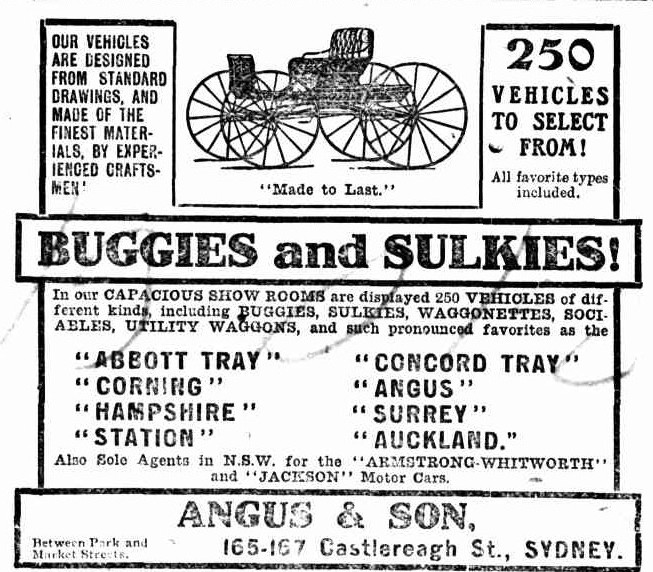
A word skirmish in court 2 columns regarding the dissolution of the company that tried to start a new run: IN EQUITY. (1914, February 24).The Sydney Morning Herald (NSW : 1842 - 1954), p. 6. Retrieved from http://nla.gov.au/nla.news-article15470557
And as many people could not afford the new fangled cars and horses were still here in Pittwater and still used well into the 1930's even when a regular bus service had been established, apart from kinship with these four legged wonders - there was always this to consider - 'shank's pony':
Christmas Day is one of the few in the year that the theatres close. Some friends of mine, knowing this, invited me to spend Christmas and Boxing Day with them at Pittwater, a beautiful little sea side resort some miles from Manly. Everything went well during the trip down. The boat Journey to Manly was delightful, then the swift rush through the air on a powerful motor car as far as Bayview, and then the launch trip to Pittwater. It made one feel 'twas lovely to be alive. I was sorry next day when the time for the return journey came, but, of course, I had my business to attend to. It was arranged for a car to meet me at Bayview in time to catch the 6 o'clock boat from Manly to Sydney.But, lo and behold there was no car. I waited and waited, but it never came. I found out afterwards that it had broken down. As the time slipped by I became nearly frantic, and just as I was in utter despair, up dashed some friends in a motor. Seeing my predicament, they invited me to jump in, and back they turned towards Manly. I felt I was saved, but. MY TRIUMPH WAS SHORT-LIVED, for - we had hardly started when some thing went wrong, and the car refused to budge. There was nothing for it now but to walk on and trust to luck. One of the party was left at Bayview to telephone to Manly for anything on wheels that could be secured. After walking some considerable distance, a coach and pair appeared bound for Bayview.- Here was a chance If only we could persuade the driver to turn his horses. They say everyone has his price, and, sufficient inducement being offered him, we got on board and started a race against time. The horses seemed to understand what was wanted of them, and the driver did his best but with it all I felt we'd never get there in time. As we dashed into Narrabeen we saw in front of the hotel a motor car. Here was salvation, if it was only ours for a time. Well, it was managed, and in we got. We went like the wind, just reaching the 7.30 p.m. boat as the gangway was being pulled away. On we scrambled, and I breathed a sigh of relief, thinking my troubles were at an end. But not bo, for a thick fog came up, and It was 8.30 before we reached Circular Quay. I have never looked with such pleasure on any vehicle in my life as then, when I saw a good old Sydney hansom standing by. In I jumped with a gentleman friend who had accompanied me and as the cab drew up at the stage door of the theatre I leapt out, not even waiting to say 'Thank you' to my friend. At this point things took a comedy
 turn, for as I flew down the lane I heard one of the little newspaper boys say: 'By jove she's , LEFT HIM IN THE LURCH.' . .Little did that little boy dream that I was beside myself and that my one thought was to get on the stage in time. Well, I got there in time — but only in time. I'll never forget that night. The strain was awful. When it was all over I did the usual thing— weep; but, of course, this did me good. And I vowed I never again would leave myself to the tender mercies of a motor car. THE JOYS OF MOTORING. (1909, December 26). Sunday Times (Sydney, NSW : 1895 - 1930), p. 13. Retrieved from http://nla.gov.au/nla.news-article126585259
turn, for as I flew down the lane I heard one of the little newspaper boys say: 'By jove she's , LEFT HIM IN THE LURCH.' . .Little did that little boy dream that I was beside myself and that my one thought was to get on the stage in time. Well, I got there in time — but only in time. I'll never forget that night. The strain was awful. When it was all over I did the usual thing— weep; but, of course, this did me good. And I vowed I never again would leave myself to the tender mercies of a motor car. THE JOYS OF MOTORING. (1909, December 26). Sunday Times (Sydney, NSW : 1895 - 1930), p. 13. Retrieved from http://nla.gov.au/nla.news-article126585259In our extras to accompany this page you will see that a Stage Coach Act was introduced early on - what it doesn't mention, and what many who stem from a rural background can tell you is that horses love to run beside each other, and beat each other in a race. As some of the articles above demonstrate when upsets have occurred, the road as much as a wild driver, who incites his team of horses to flight, will be the cause of an upending:
From Newport, passengers and mails were taken on to Manly by Bolton's line of coaches, these being the first coaches that ran to what was then but a fishing village. As there was no bridge across the Narrabeen Lagoon the coaches were driven through the water, with the passengers feet up on the seat and the horses almost swimming. Sometimes a boat was used, a coach being kept on each side of the lagoon. As the roads were only bush tracks it took four or five horses to pull these coaches, and, as on occasions sporting passengers would tip one driver half a sovereign to beat the other, some of the trips were exciting. The fare was 4/- single and 6/- return. About 1888 a boat called the General Gordon plied across the Hawkesbury River carrying the mails and passengers to the two ends of the Newcastle railway until the Hawkesbury Bridge was completed, a change of direction that closed, to the careers of both the steamer Florrie and Bolton's line of coaches. THE "MOSQUITO FLEET". (1935, May 10). Windsor and Richmond Gazette (NSW : 1888 - 1954), p. 2. Retrieved from http://nla.gov.au/nla.news-article85799318
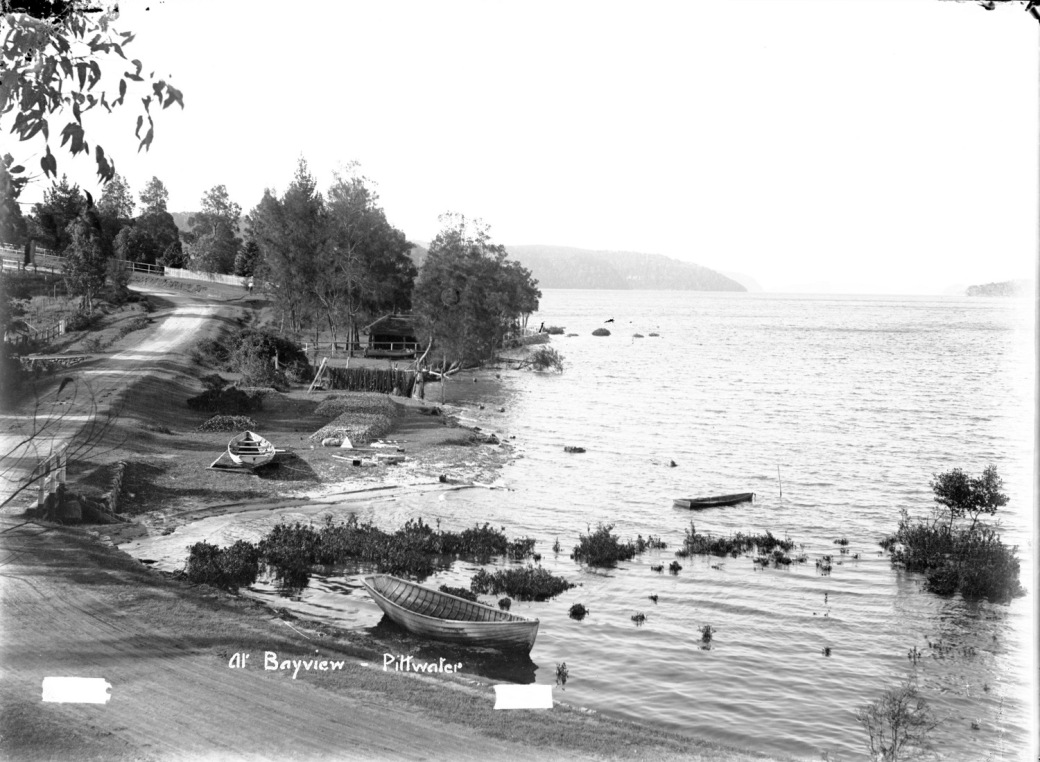
The smell of horses and hay is a scent Pittwater has only recently been deprived of; paddocks in Warriewood were home to equine creatures up until 10 years ago and are still at Timbarra Valley Riding School at Ingleside. People to build all the drays, coaches, wheels, and to paint them formed part of early records and regulations to modify the at times wild Australian spirit were also soon to follow:
JAMES SPARKS OF PITT'S ROW INFORMS Gentlemen and the Public in general, that he carries on the Business of a WHEELWRIGHT in all its different Branches. Coach Chaise, and Cart Wheels made andmended in a neat a substantial manner, on moderate Terms.Classified Advertising. (1803, July 17). The Sydney Gazette and New South Wales Advertiser (NSW : 1803 - 1842), p. 1. Retrieved from http://nla.gov.au/nla.news-article625676
Breach of the Stage Coach Act.-John Pike, the driver of Mr. Roche's Parramatta omnibus called the Turon-Ophir, yesterday appeared before the Police Magistrate, on summons, to answer an information filed by Mr. Stubbs for a breach of the Stage Coach Act on Friday last, by furiously driving, and thereby endangering the safety of the passengers. Mr.C. E. Langley deposed that he is a surveyor, and that on Friday last he was on duty on theParramatta Road; he saw the defendant driving along the road at a furious rate,-say at the rate of 12 or 14 miles an hour ; it appeared to him that defendant and the driver of another omnibus were racing; he considered that the safety of the passengers was very much perilled; defendant pulled up at Ireland's, whither witness followed and spoke to him on the subject; defendant then said he could not help it,-that the driver of the White Rose omnibus overtook him, and that he (the driver of the White Rose) by urging his horses to pass defendant started the horses driven by him (defendant), and that they ran off beyond his power of control. In cross-ex-amination Mr. Langley said that the passengers corroborated Pike's statement, and said that he was not to blame. Mr. Roche, defendant's employer, gave him a good character as a steady sober man and a careful driver. Thomas O'connell, the cad of the Turon Ophir, deposed that the horses driven by defendant were started by the other driver urging his horses ; and that defendant made a longer stoppage than usual at Ireland's for the sake of avoiding coming up again with the other omnibus. Mr. Stubbs intimated that as a warning: and not punishment was the object in instituting this proceeding, he was willing to withdraw the information on payment of costs.Mr. Dowling acceded, the defendant complied with the conditions, and the information was accordingly withdrawn. Advertising. (1851, September 5).The Sydney Morning Herald(NSW : 1842 - 1954), p. 3. Retrieved from http://nla.gov.au/nla.news-article12930079
Boulton Family Records:
Marriages for the Groom's name William Boulton and Bride's name Sarah in the years1850 to 1877 : 1241/1856 BOULTON WILLIAM WATERS SARAH CAMDEN
William Boulton snr. born circa 1830 Assisted Immigrants - State Records of NSW:
BOULTON William 23 Plantagenet 1854 Sydney and/or Newcastle Reel 2137, [4/4791]; Reel 2467, [4/4940]
BOULTON William 18 Midlothian 1849 Sydney and/or Newcastle Reel 2135, [4/4786] Page 317; Reel 2459, [4/4912]
BOULTON. - December 28, at Newport, William Boulton, sen., aged 67 years. Family Notices. (1897, December 29). The Sydney Morning Herald (NSW : 1842 - 1954), p. 1. Retrieved from http://nla.gov.au/nla.news-article14174925
The death took place at Bayview yesterday (28th of December, 1897) , of an old identity of the district in the person of W. Bolton. He had been a resident of the locality for twenty-six years, and was the pioneer coachman to Bayview. He piloted the first overland mail from Sydney. Previously the mails came by a very roundabout way by sea, and were landed at the old wharf at Bayview. Bolton was very popular, and was, perhaps, the best-known man in the Pittwater district. BREVITIES. (1897, December 29). Evening News (Sydney, NSW : 1869 - 1931), p. 4. Retrieved from http://nla.gov.au/nla.news-article108874517
BOULTON.-September 9, at Manly Cottage Hospital, Sarah Ann, widow of the late William Boulton, senr., of Newport, aged 86years. Family Notices. (1919, September 11). The Sydney Morning Herald (NSW : 1842 - 1954), p. 6. Retrieved fromhttp://nla.gov.au/nla.news-article15862292
Sarah Ann - Born 1833 - name prior to her marriage: deaths for the given name Sarah and last name Boulton in the years 1900 to 1919
20997/1919 BOULTON SARAH A THOMAS MANLY
State Records of NSW: Assisted immigrants - WATERS Thomas 33 Elizabeth (II) 1844 Sydney and/or Newcastle and family Reel 2135, [4/4785] Page 93; Reel 2452, [4/4895]
Births Deaths and Marriages Register for NSW: Births for the last name Boulton (and the mother's given name Sarah and the father's given name WILLIAM) in the years 1856 to 1880
5754/1874 BOULTON RICHARD WILLIAM SARAH ST LEONARDS
6653/1877 BOULTON EDWARD WILLIAM SARAH MANLY
5670/1857 BOULTON GEORGE WILLIAM SARAH CAMPBELLTOWN
On the 27th April, at Penrith, the wife of William Boulton, of a son. Family Notices. (1857, May 2). The Sydney Morning Herald(NSW : 1842 - 1954), p. 1. Retrieved from http://nla.gov.au/nla.news-article12994971
BOULTON.—April 19, 1934, at Manly, George Boulton, of Queen's-parade, Newport, loving father of Jessie, aged 77 years. Family Notices. (1934, April 21). The Sydney Morning Herald(NSW : 1842 - 1954), p. 14. Retrieved from http://nla.gov.au/nla.news-article17057416 - eldest son – born 1857
CRICKET.
A team from the newly formed Mossman's Bay Club journeyed to Newport on Saturday, to play the Newport C.C. The ground is about 300 yards from the ocean beach, and with very little trouble could be made into a splendid ground. Matting was laid upon it, but the long grass prevented it from setting evenly, and this made the ball cut many capers.Mr. Forester captained Newport, and Mr. Jackson the Mossman's Bay team. Newport won the toss, and went in to bat, but through the excellent bowling of Jackson and Oatley were disposed of for 21, Jackson securing six wickets for 9 runs, and Oatley three for 11. Mossman's Bay replied with115 (Jackson 62 and Clarke 25), W. Boulton and J.Boulton being the most successful bowlers. In their second attempt the Newport fared very little better as they were all disposed of for 34 (J. Boulton 14 not out), Oatley and Clarke bowling throughout this innings, the former securing seven wickets and thelatter three, Mossman's Bay thus won by an innings and 60 runs. CRICKET. (1892, May 11). The Sydney Morning Herald (NSW : 1842 - 1954), p. 8. Retrieved from http://nla.gov.au/nla.news-article13843733
A young man named William Boulton a resident of Newport, had a narrow escape from being killed by an electric tram yesterday morning He was riding a bicycle along George-streut, and when near Martin place cut sharply across the road in front of an electric tram The motor knocked him down, and he was pushed along the street for several yards before the tram could be brought to a standstill. When the tram had been stopped Boulton rose little the worse for his experience, and after brushing himself carried his broken bicycle away. IMPROVEMENTS IN OUR EDUCATION SYSTEM. (1901, August 24). The Sydney Morning Herald (NSW : 1842 - 1954), p. 8. Retrieved from http://nla.gov.au/nla.news-article14405612
BOULTON.—August 30, 1941, suddenly at Newport, John Boulton, dearly beloved brother of Richard, Samuel, William, Henry, and Edward Boulton, aged 76 years. Family Notices. (1941, September 2). The Sydney Morning Herald (NSW : 1842 - 1954), p. 12. Retrieved from http://nla.gov.au/nla.news-article17751690
FUNERAL.—The Friends of Mr. WILLIAM BOULTON, of Pulpit Hill, are requested to attend the funeral of his late son HENRY ALFRED ; the procession to move from Mr. D. Beatson's, Penrith, THIS DAY, the 22nd instant. Family Notices. (1865, February 22). The Sydney Morning Herald (NSW : 1842 - 1954), p. 8. Retrieved from http://nla.gov.au/nla.news-article13102543
Pittwater, improvements, J Boulton, £10 los bd, GOVERNMENT GAZETTE. (1894, June 25). The Sydney Morning Herald (NSW : 1842 - 1954), p. 7. Retrieved from http://nla.gov.au/nla.news-article13956936
George Boulton supplied metals gravel for roads (several references; also appears to be another, cousin, branch of family, residence at Manly/Brookvale – Newport and Church Point Warringah Minutes records – 4th meeting + others in range – 1907 – 1909 - retrieved from Warringah Council Library and Service - digitised records available online.
BOULTON.-October 28, 1929. at Sydney, Edith Jessie, beloved wife of George Boulton, of Queen's parade. Newport, N.S.W., aged 46 years. Family Notices. (1929, October 30). The Sydney Morning Herald (NSW : 1842 - 1954), p. 16. Retrieved fromhttp://nla.gov.au/nla.news-article16597175
The First Pittwater Regatta:
The Newport annual regatta, which was postponed from Boxing Day, took place on Monday last, and was very successful. A large number of visitors vvere present from the Hawkesbury River and from Sydney- Tho winners of the various races were as follows:-Sculling Race, for youths under age8-Ernest Chaco; Sculling Race for girls-Miss Sarah Boulton; Sailing Race, for boats under 18ft....Gig and Dingy Race-The gig won. GLEBE ROWING CLUB. (1888, January 5). The Sydney Morning Herald (NSW : 1842 - 1954), p. 5. Retrieved from http://nla.gov.au/nla.news-article1366379
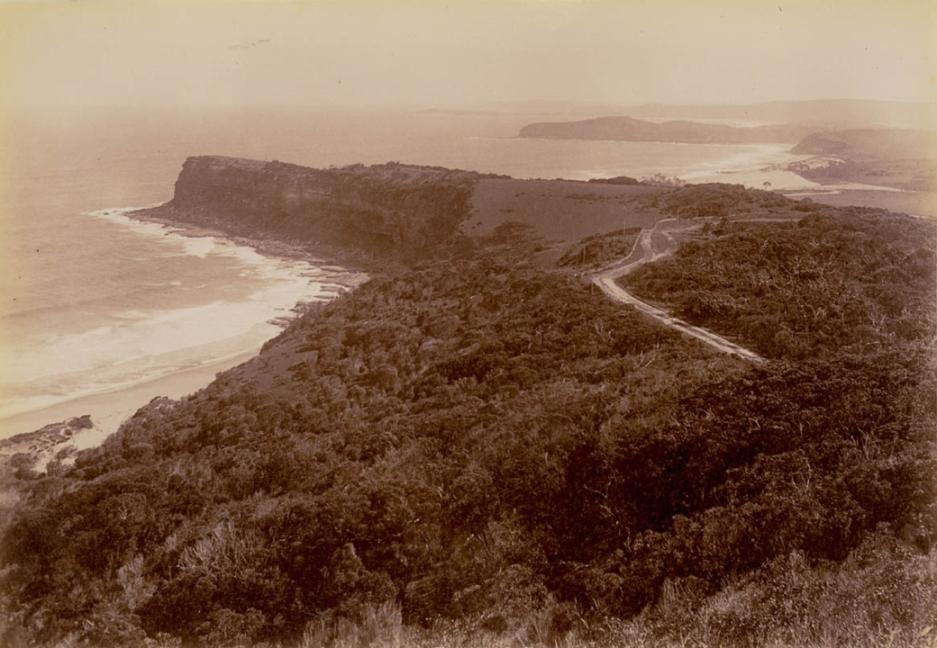
The Wild Coachmen of Pittwater - A Long and Sometimes Bumpy Ride on Tracks Instead of Roads - threads collected and collated by A J Guesdon, 2014.